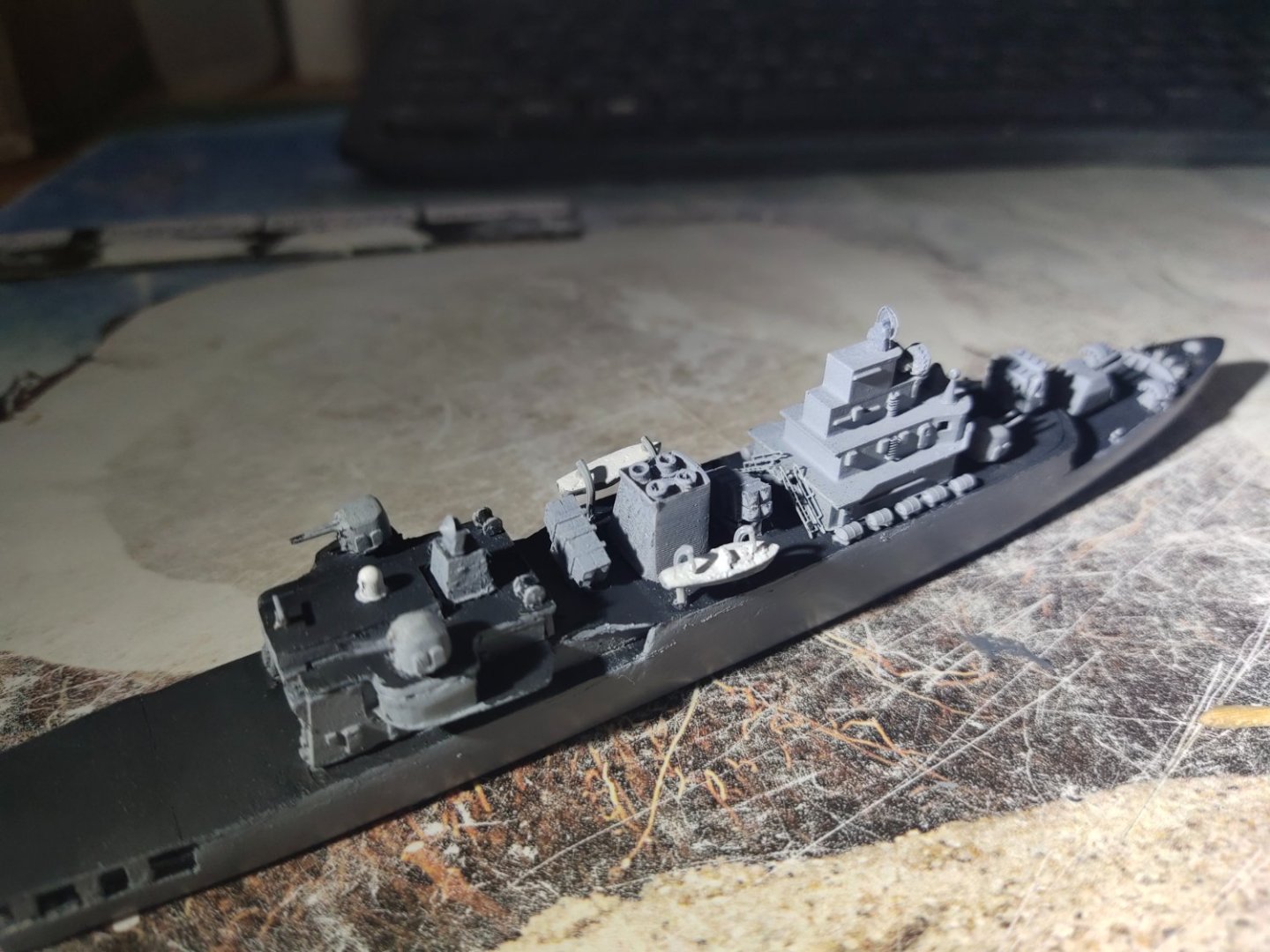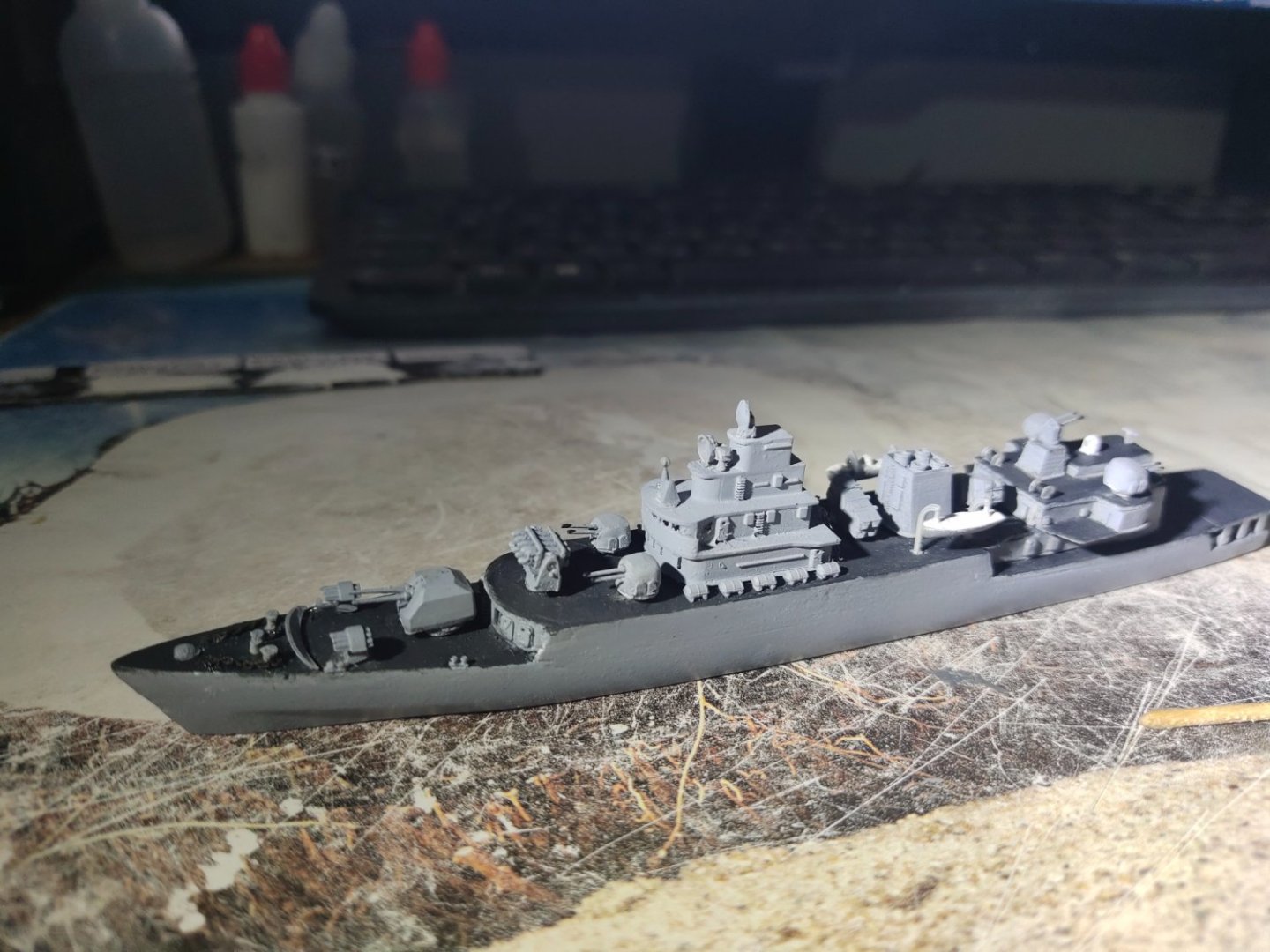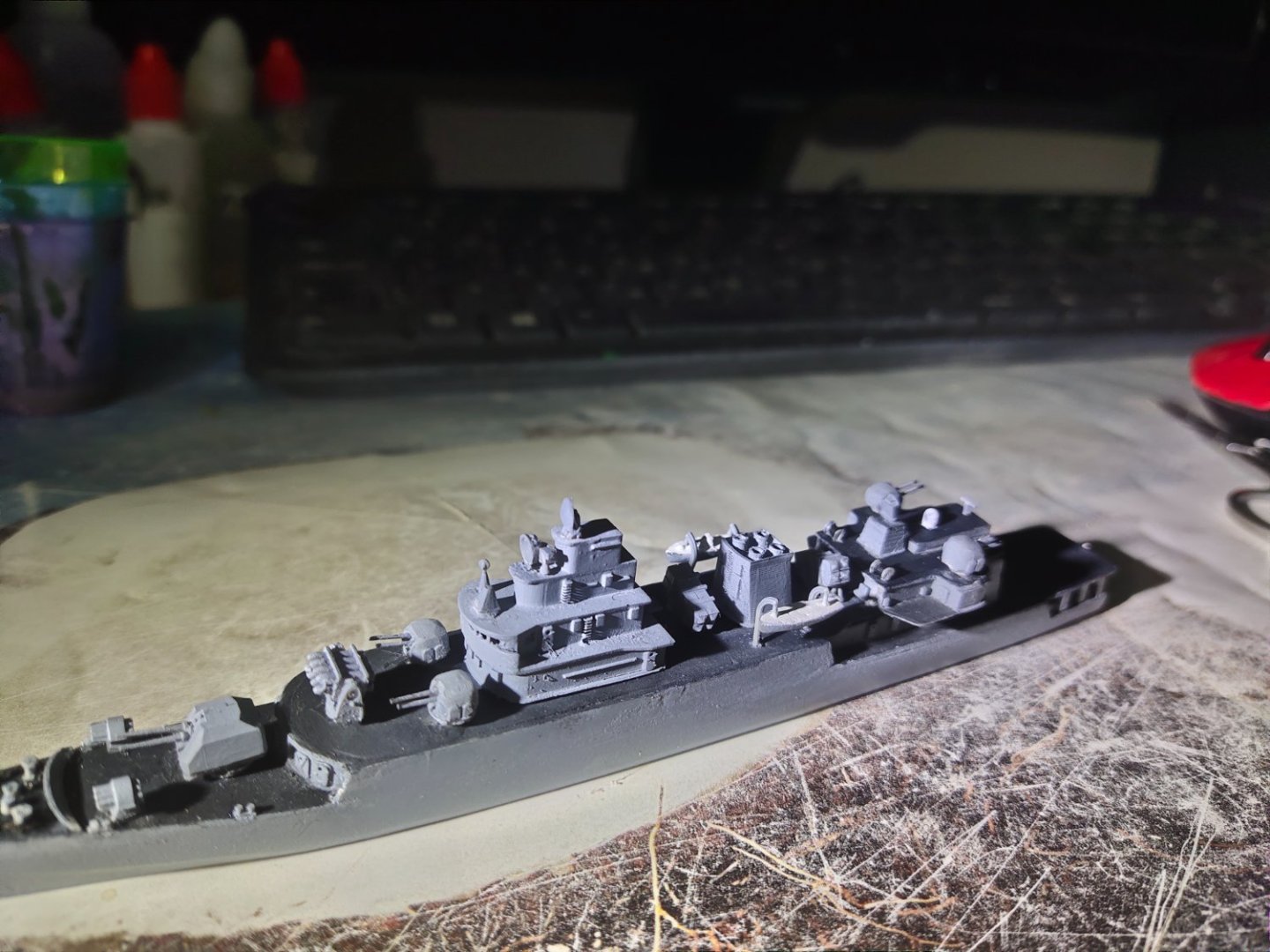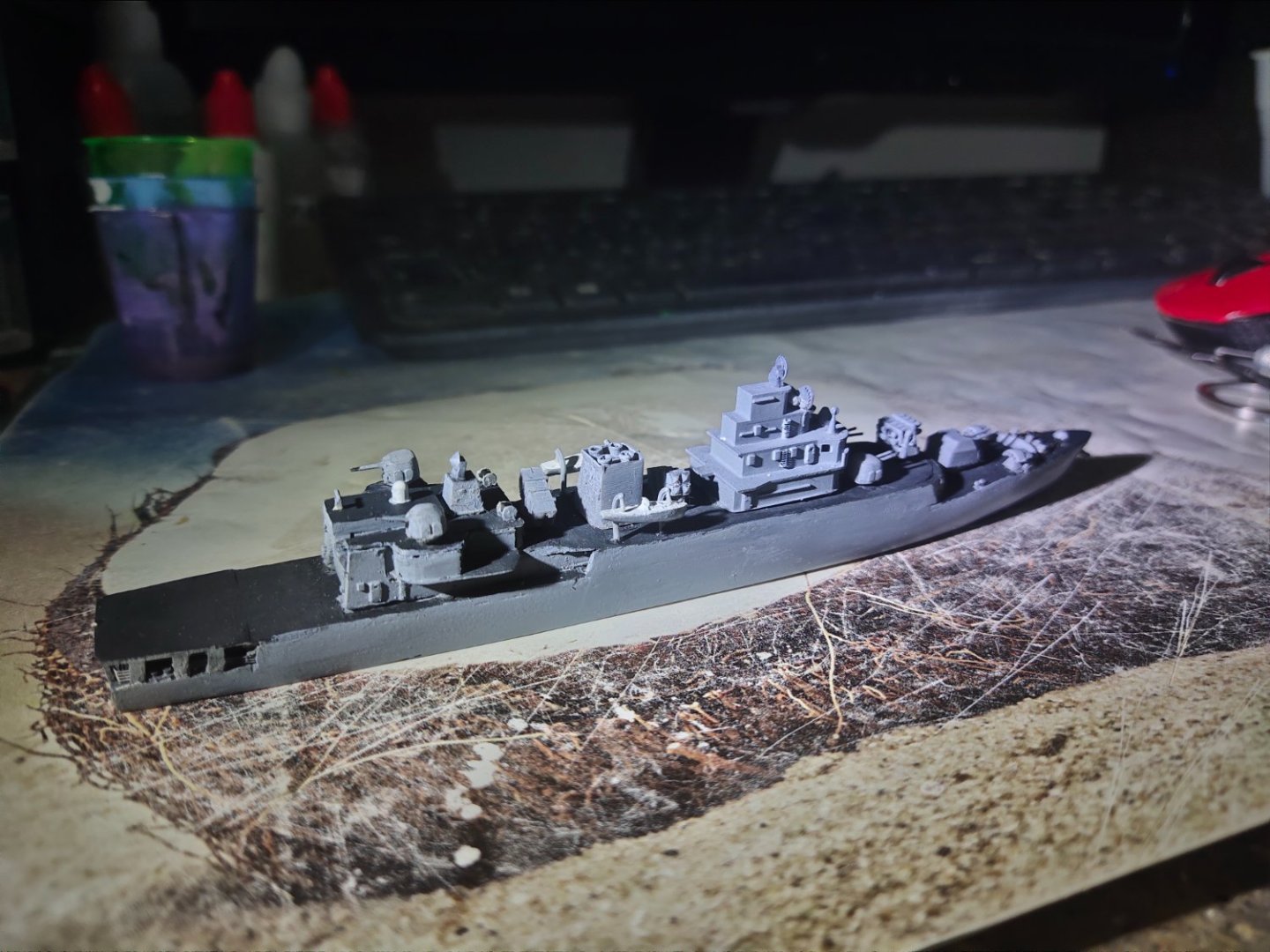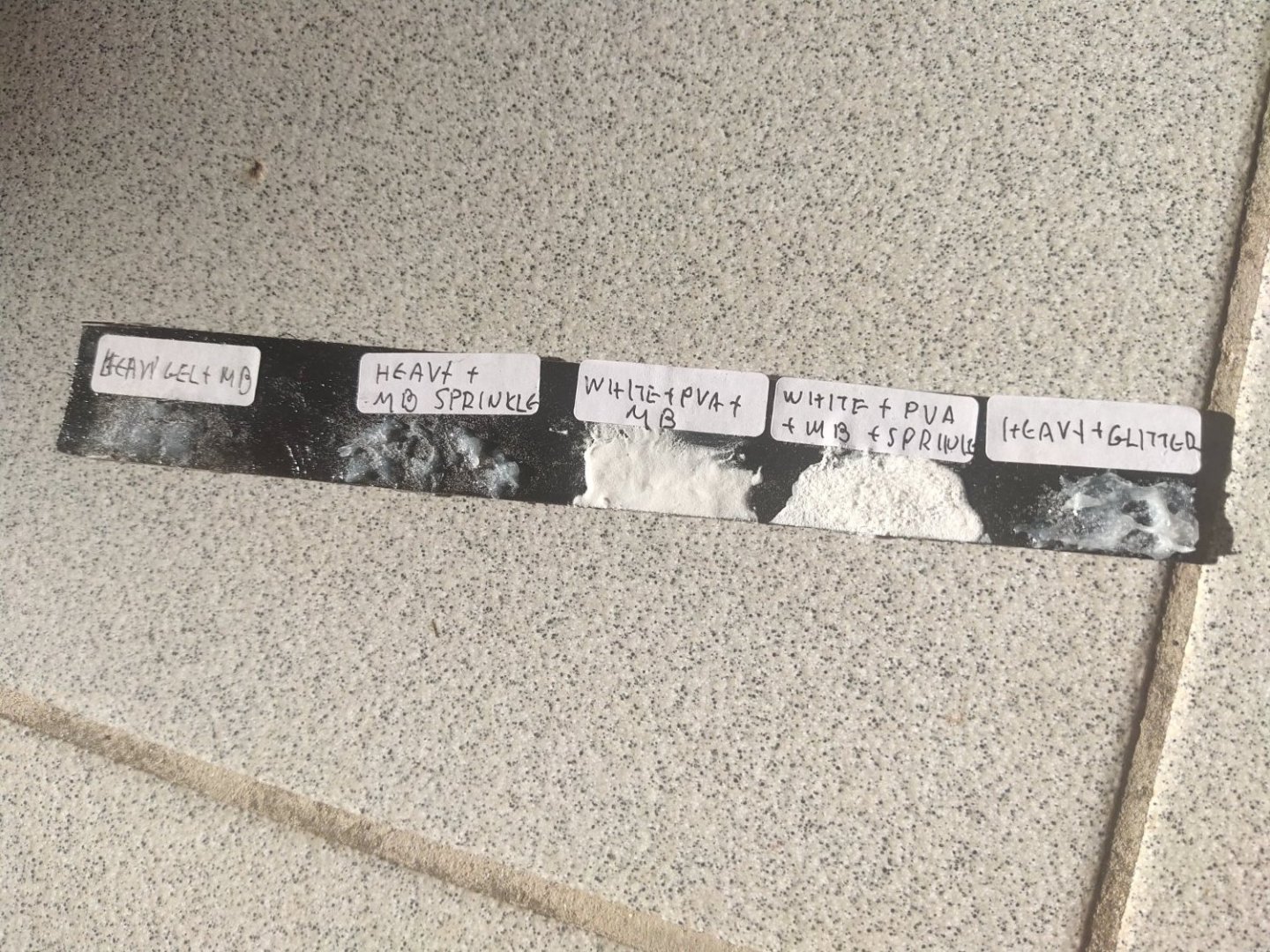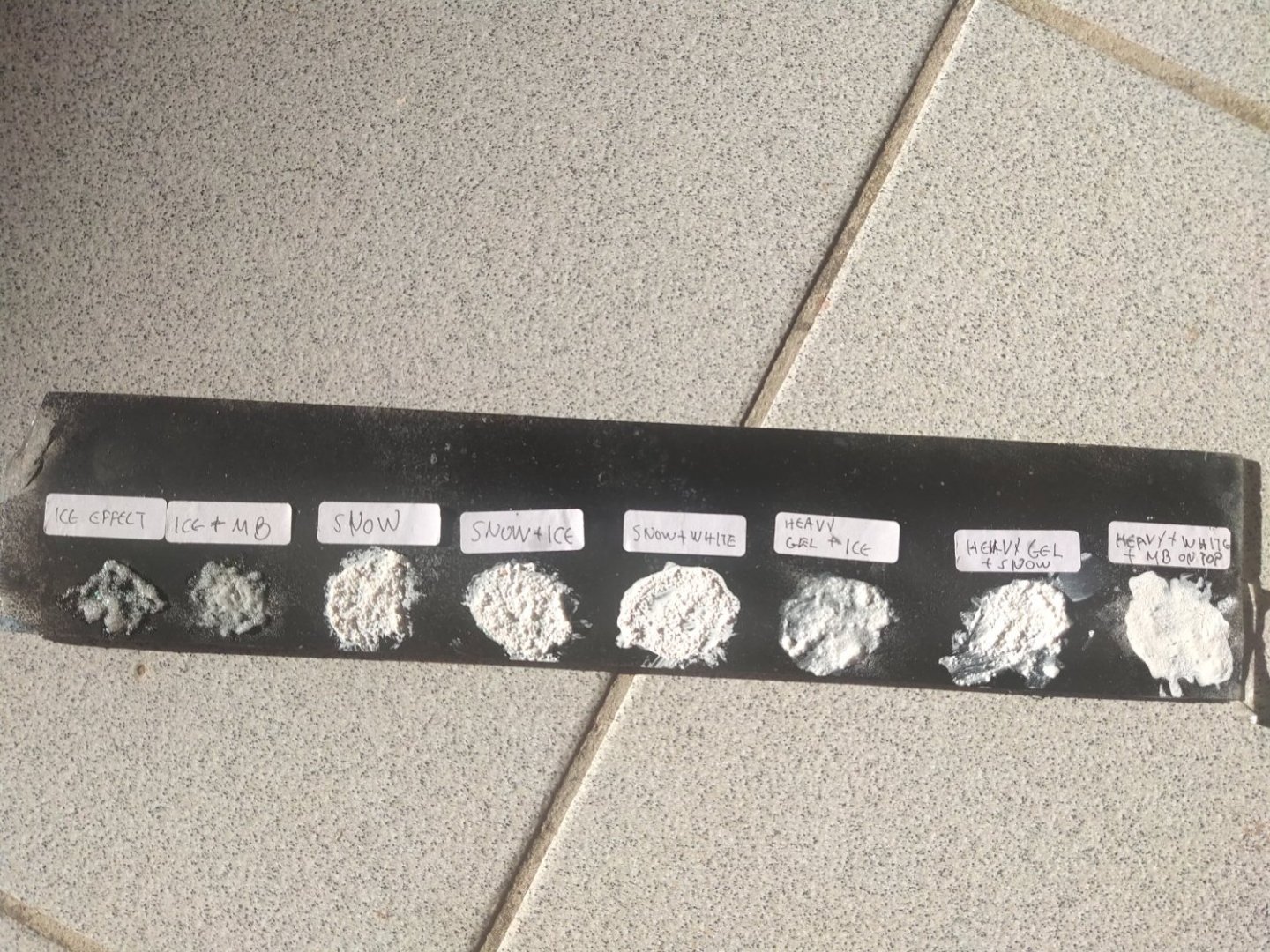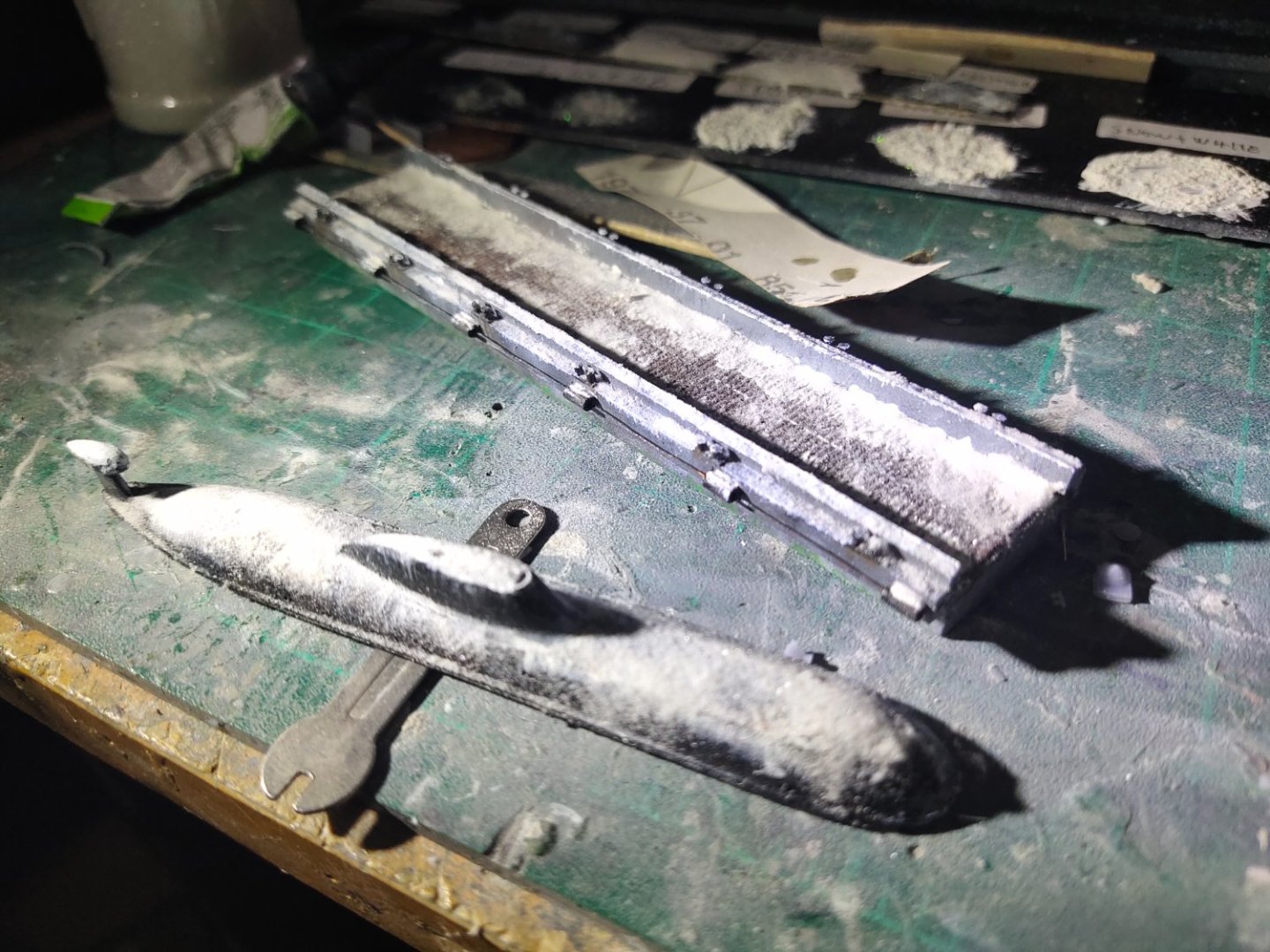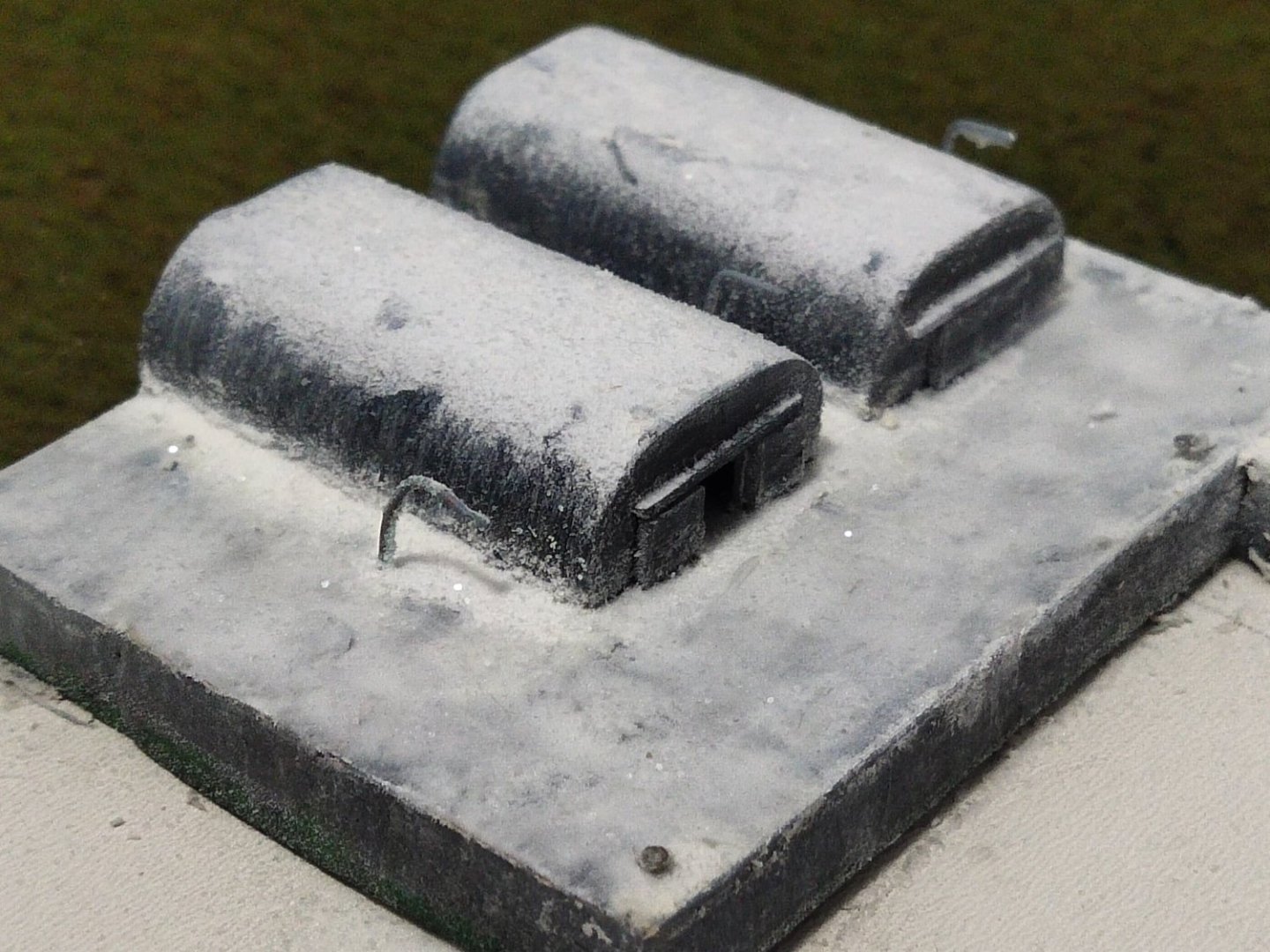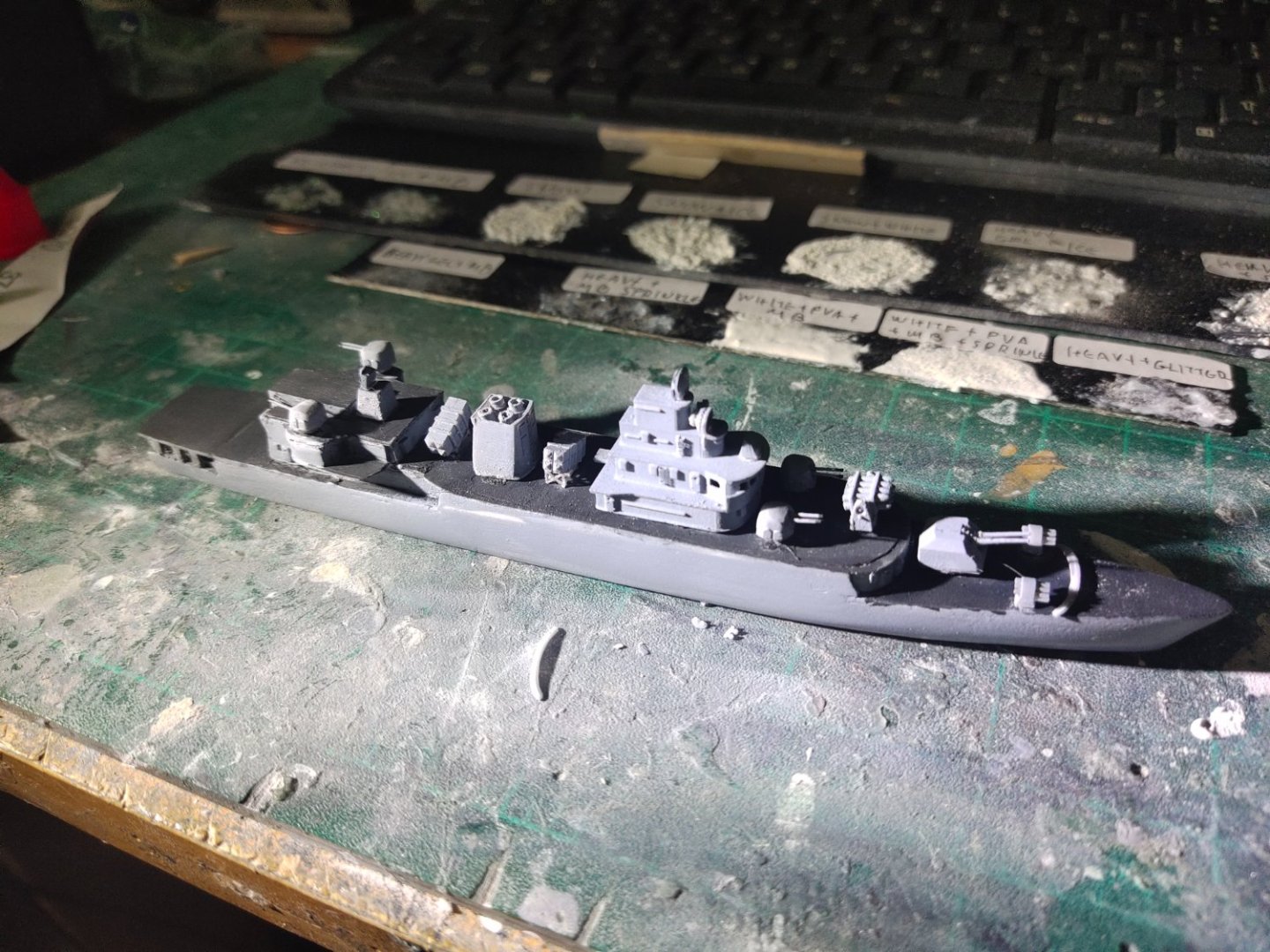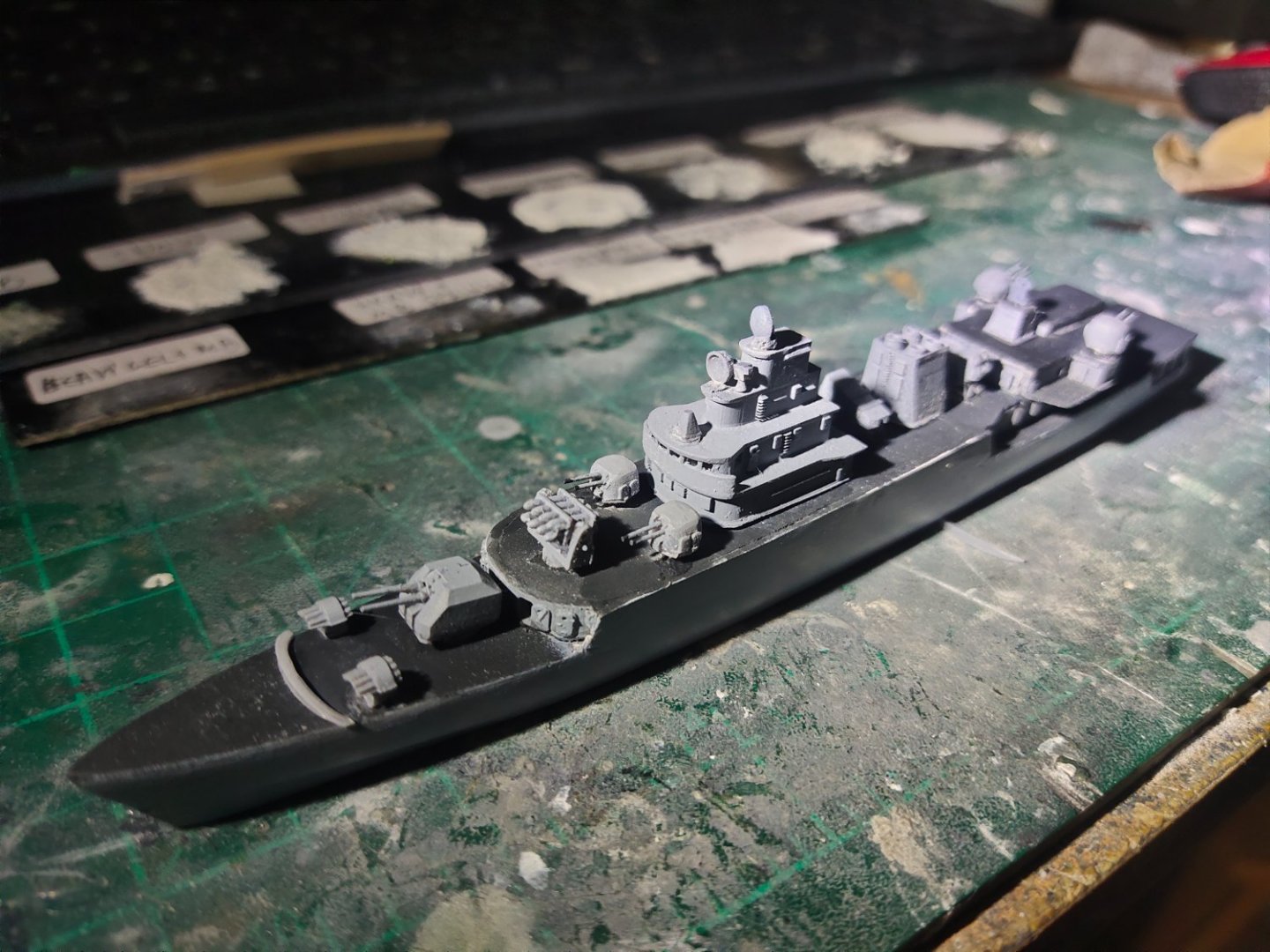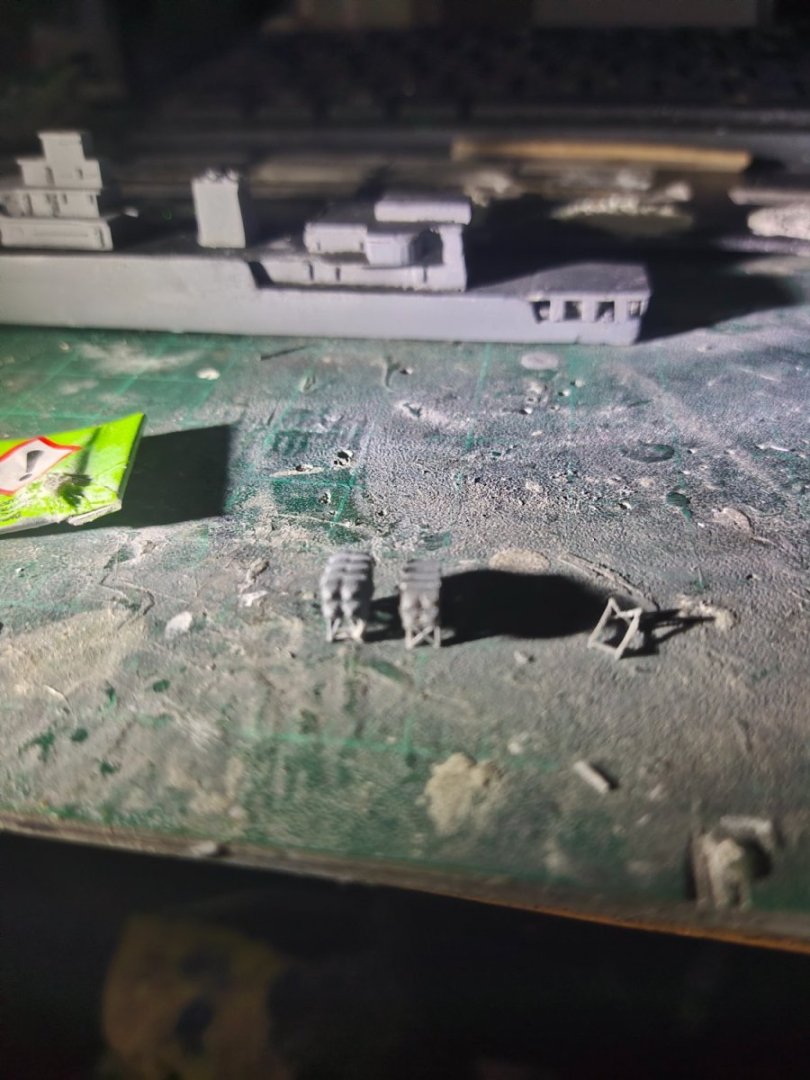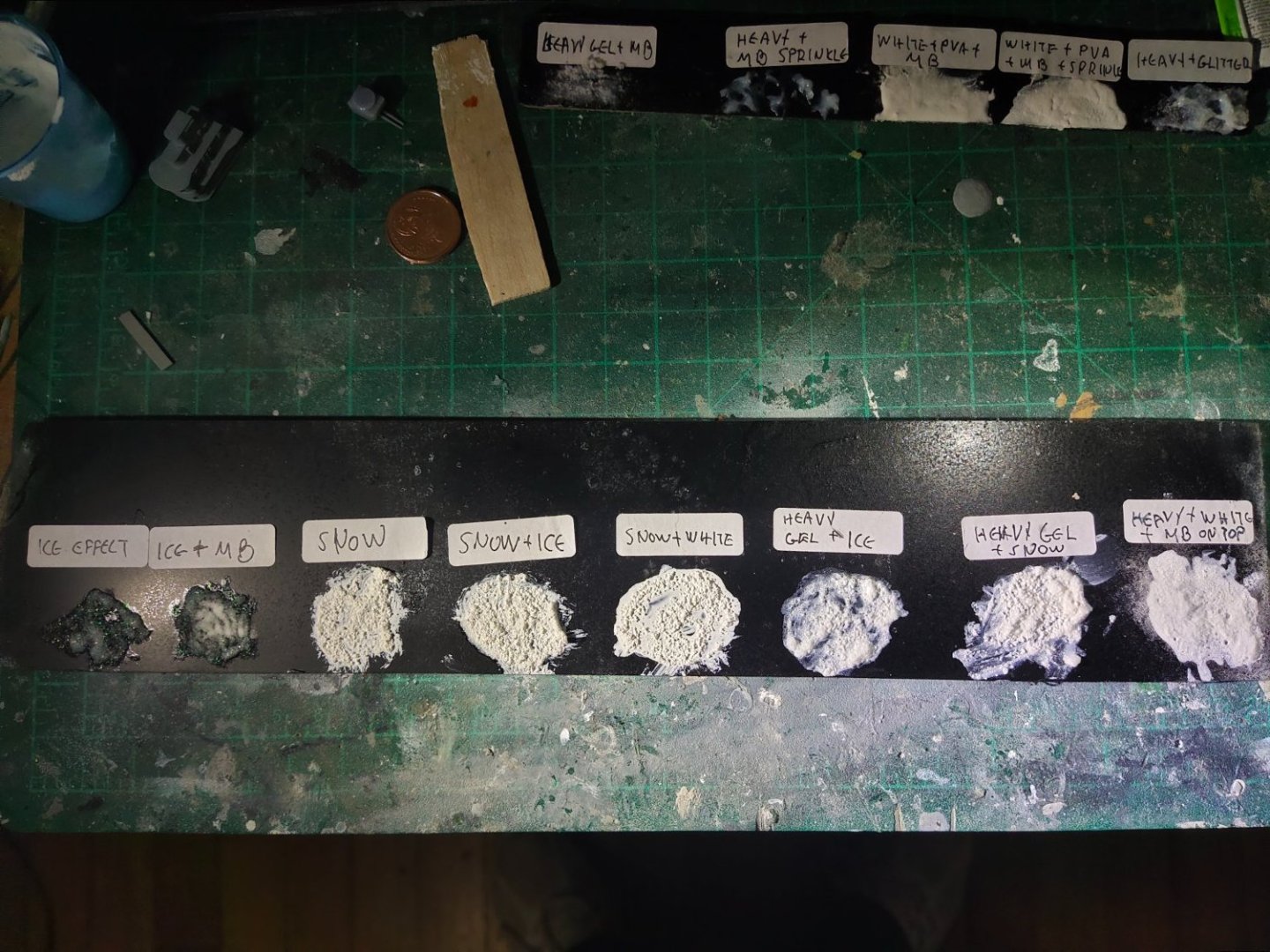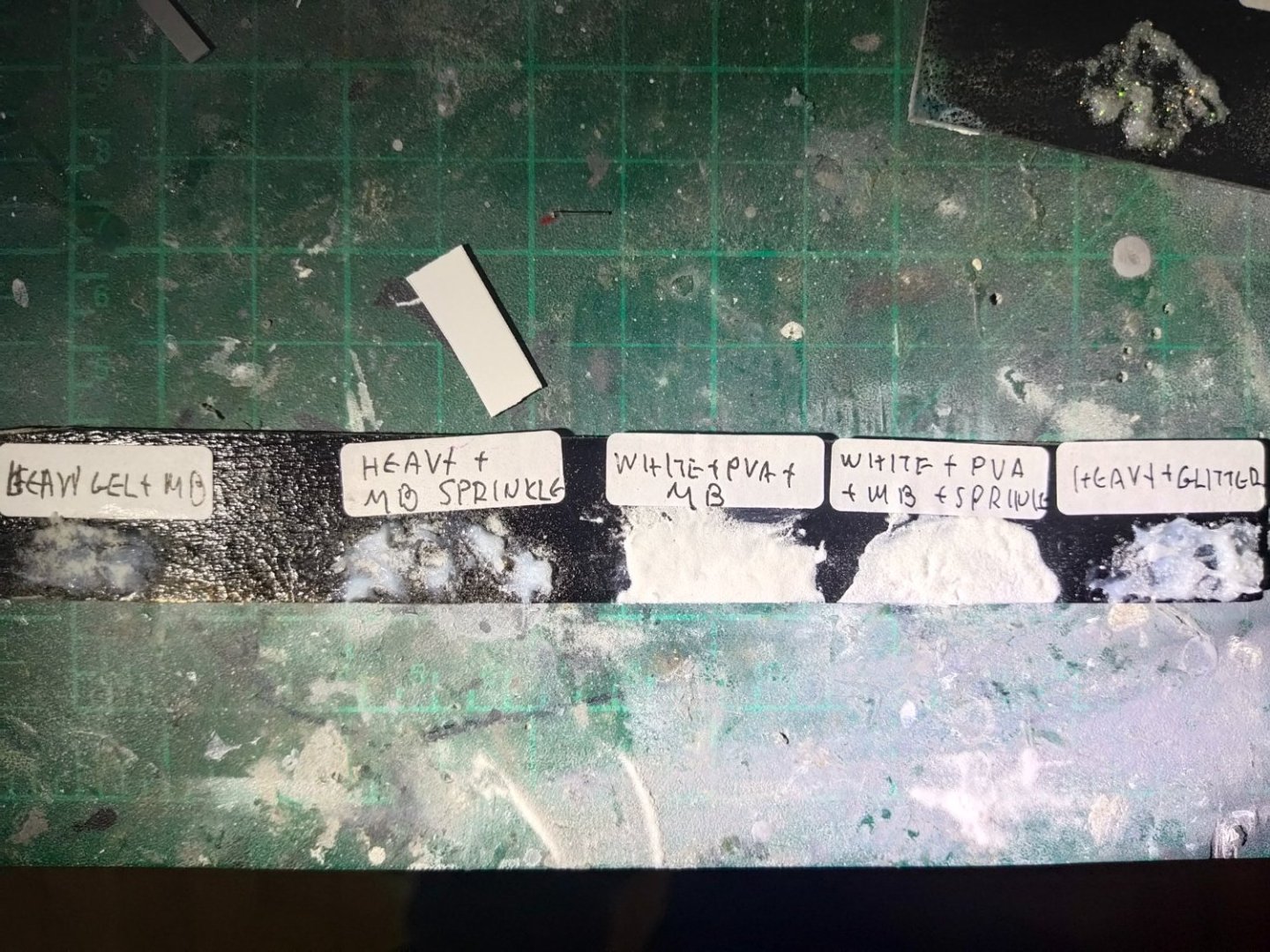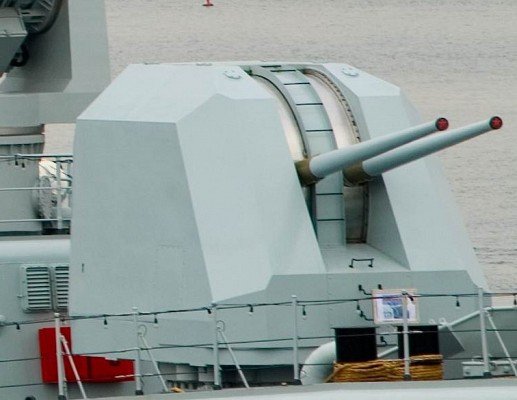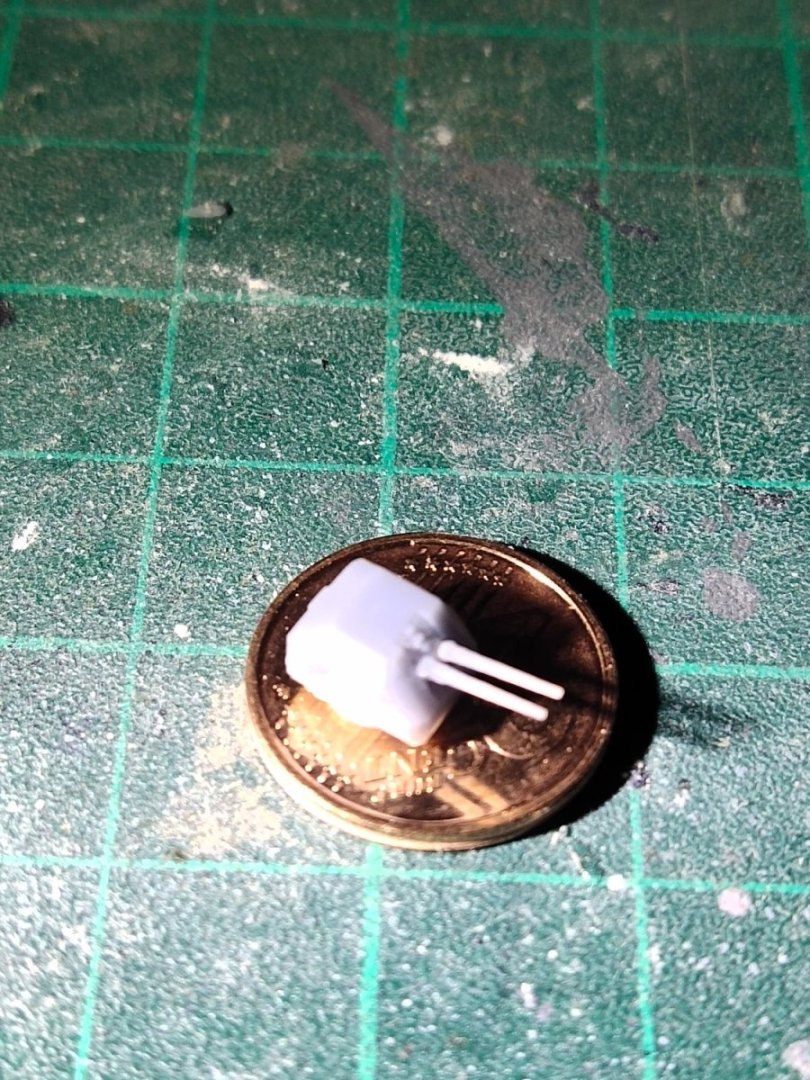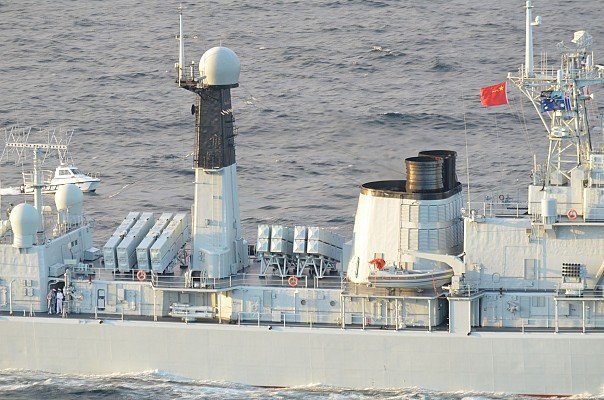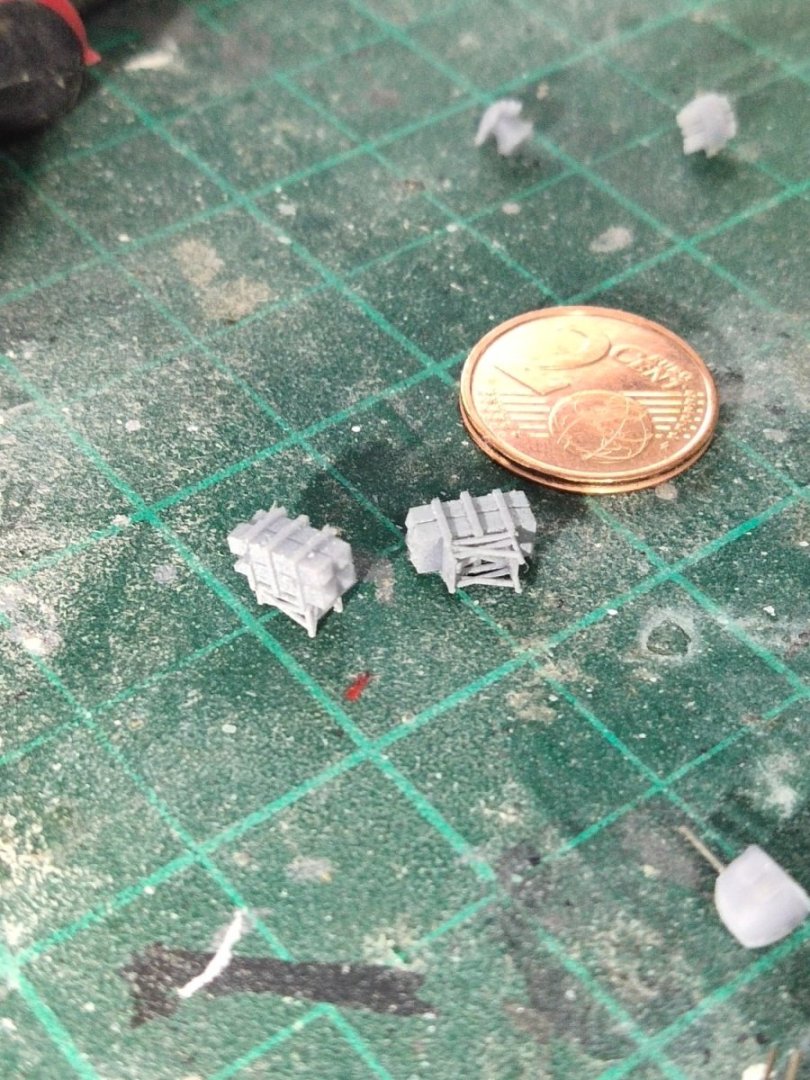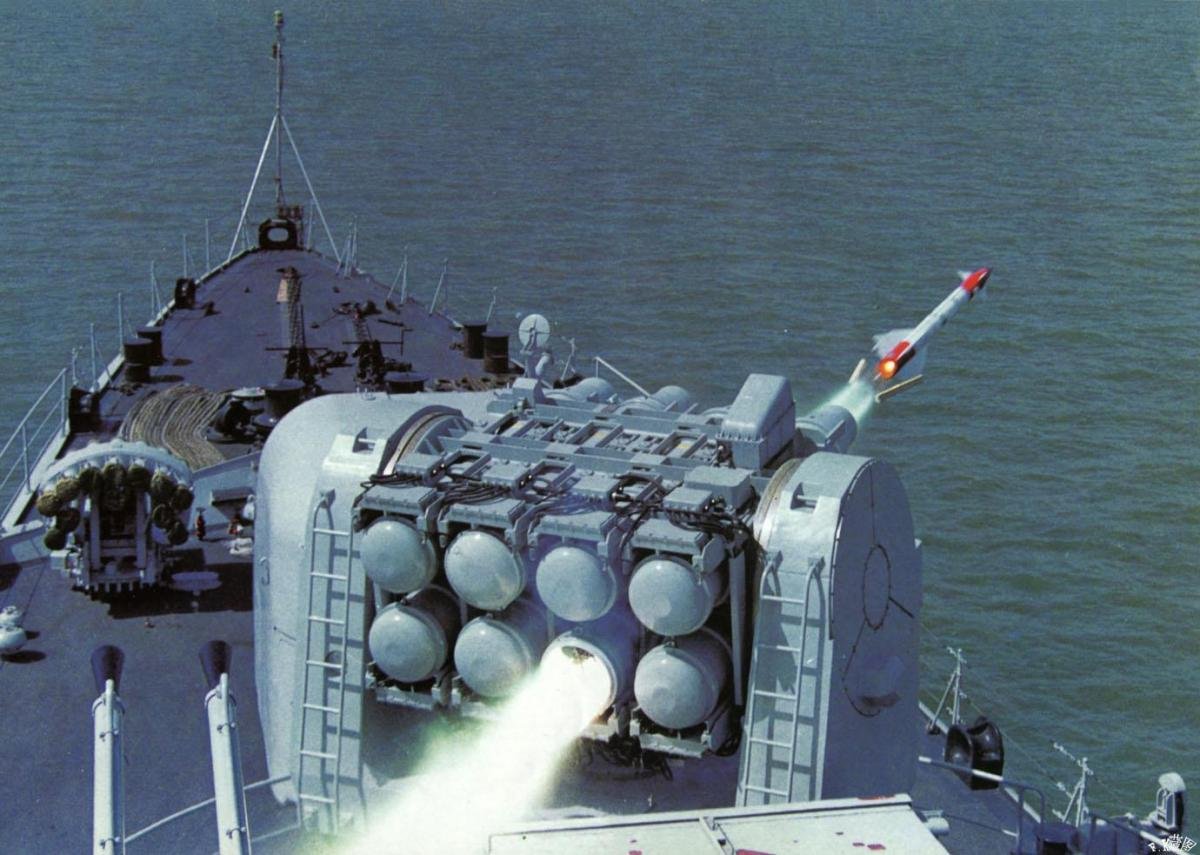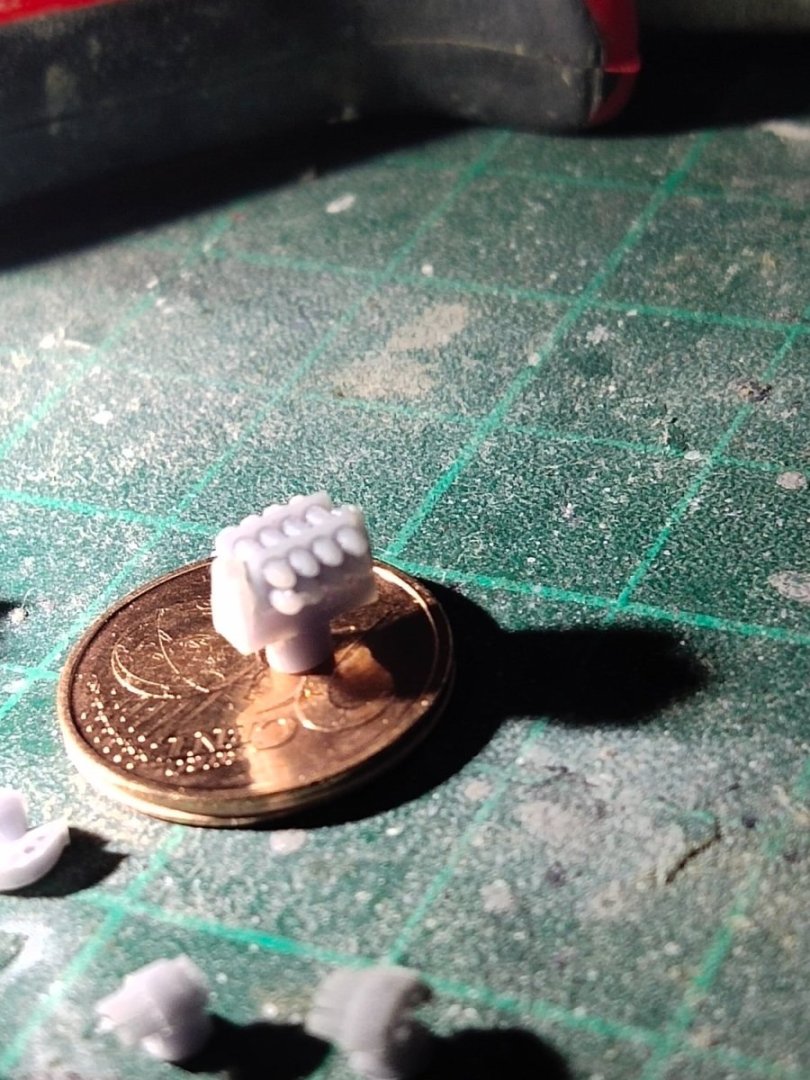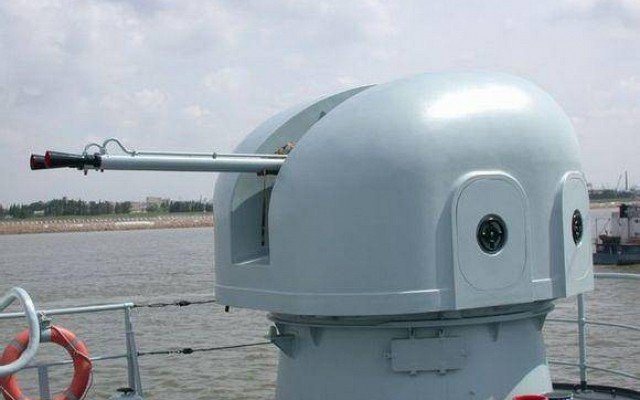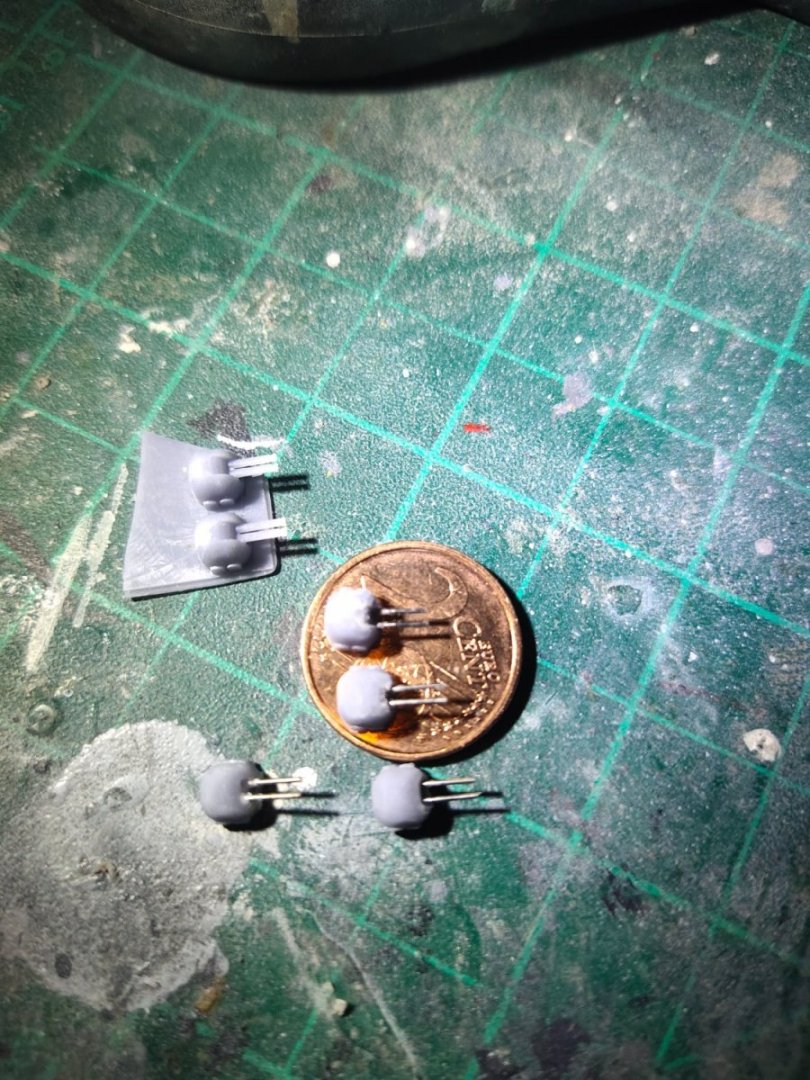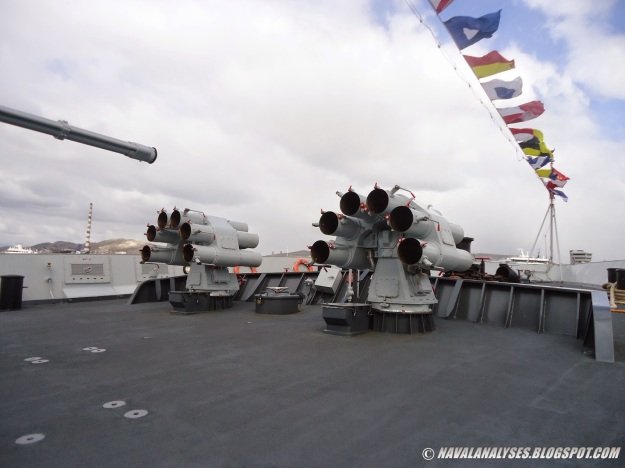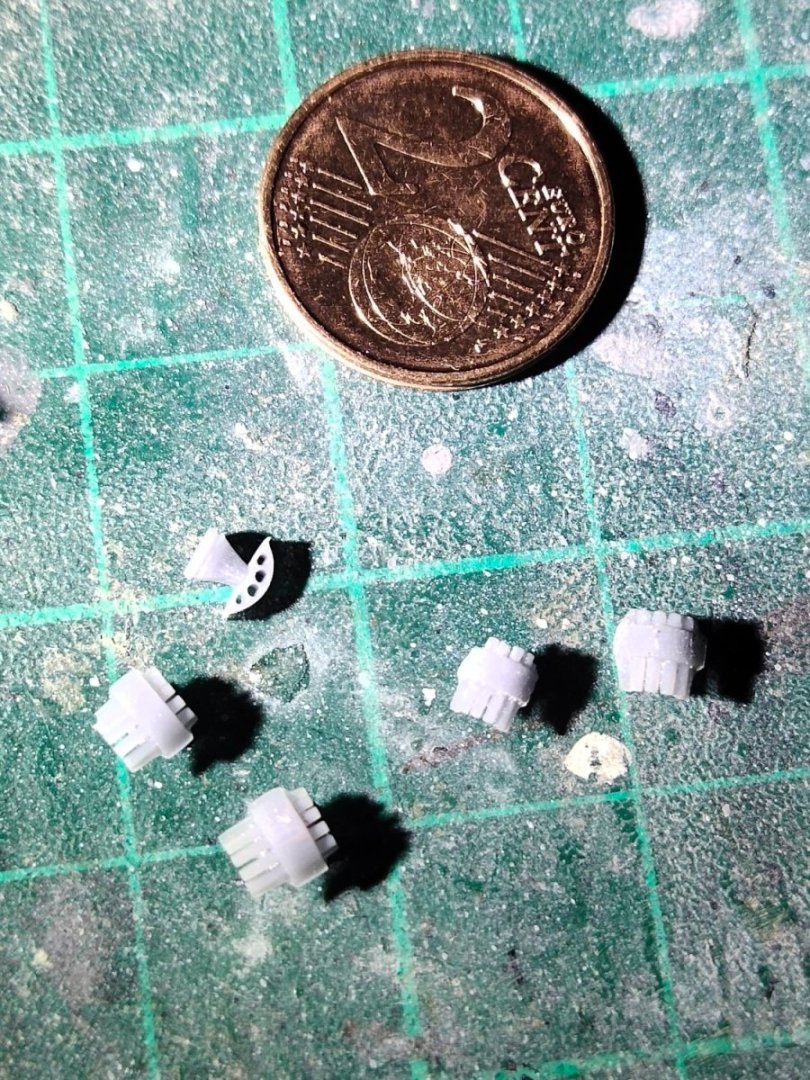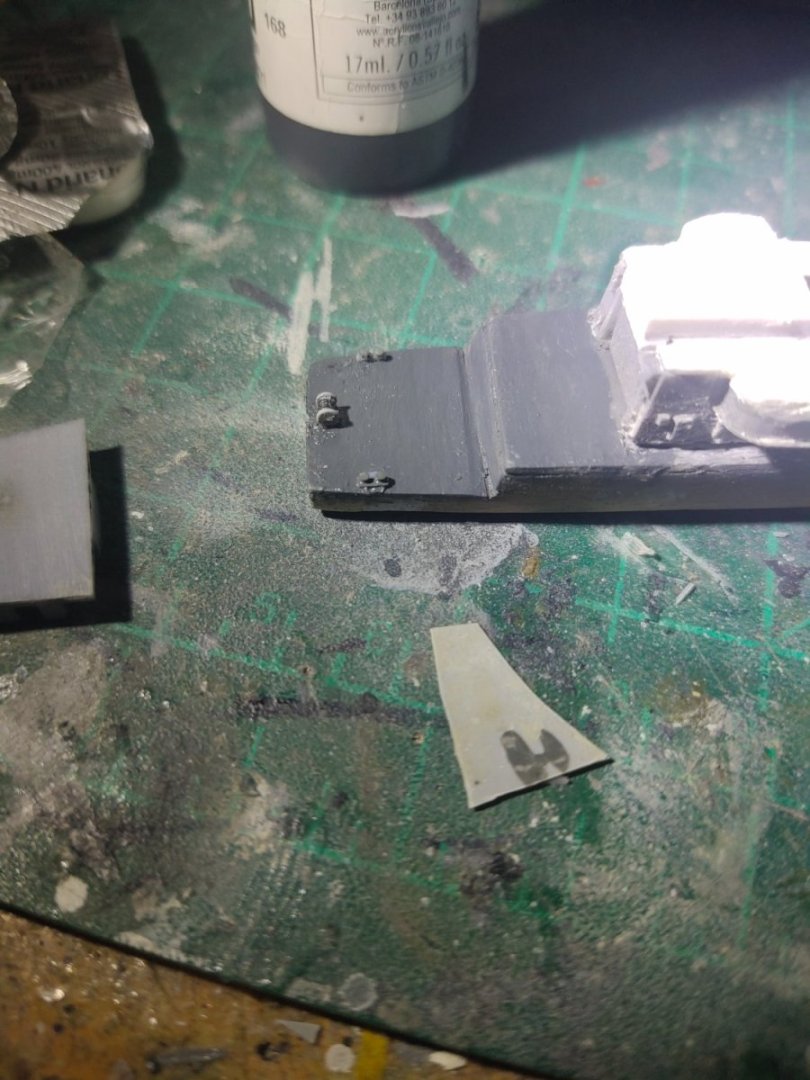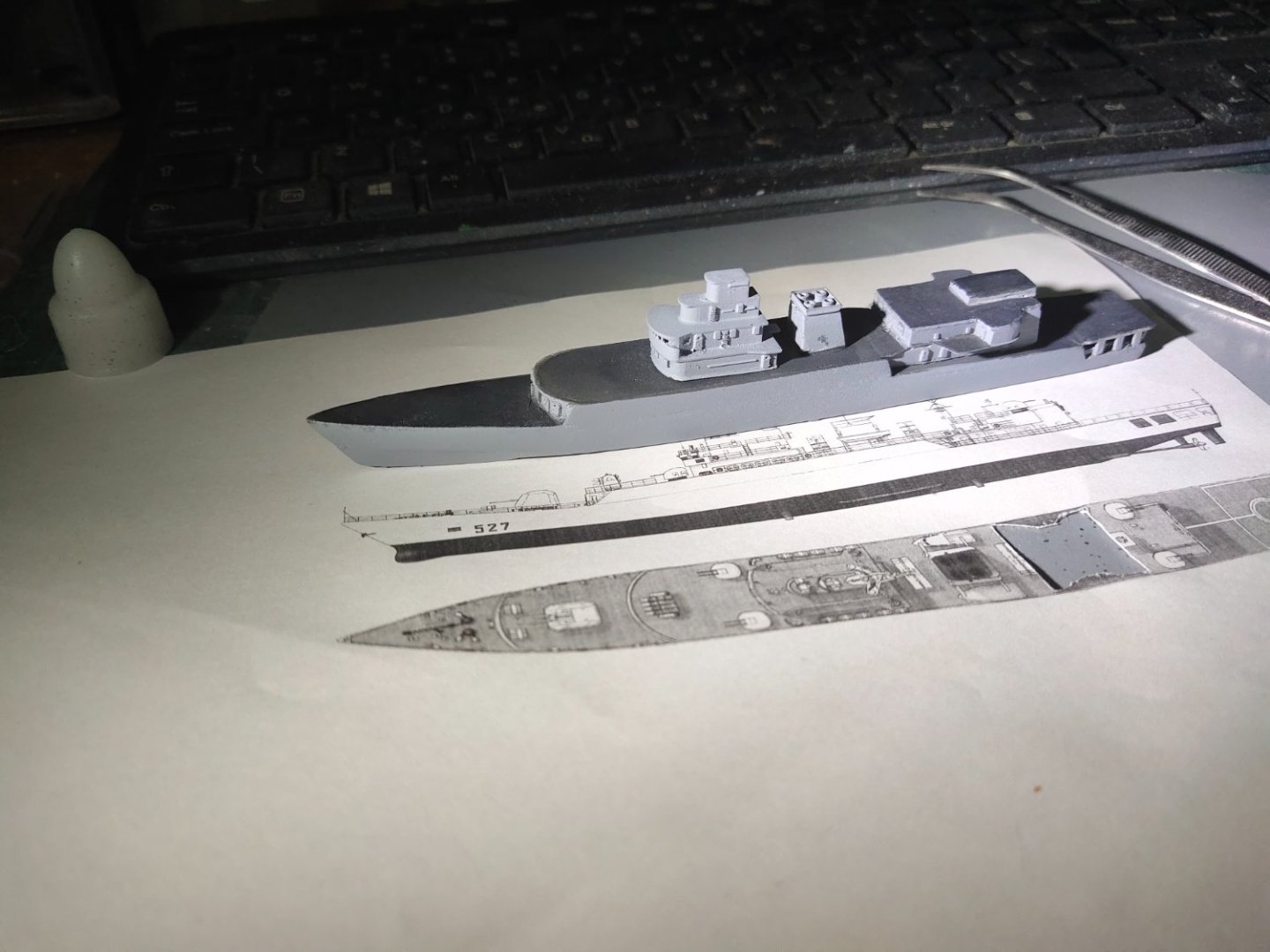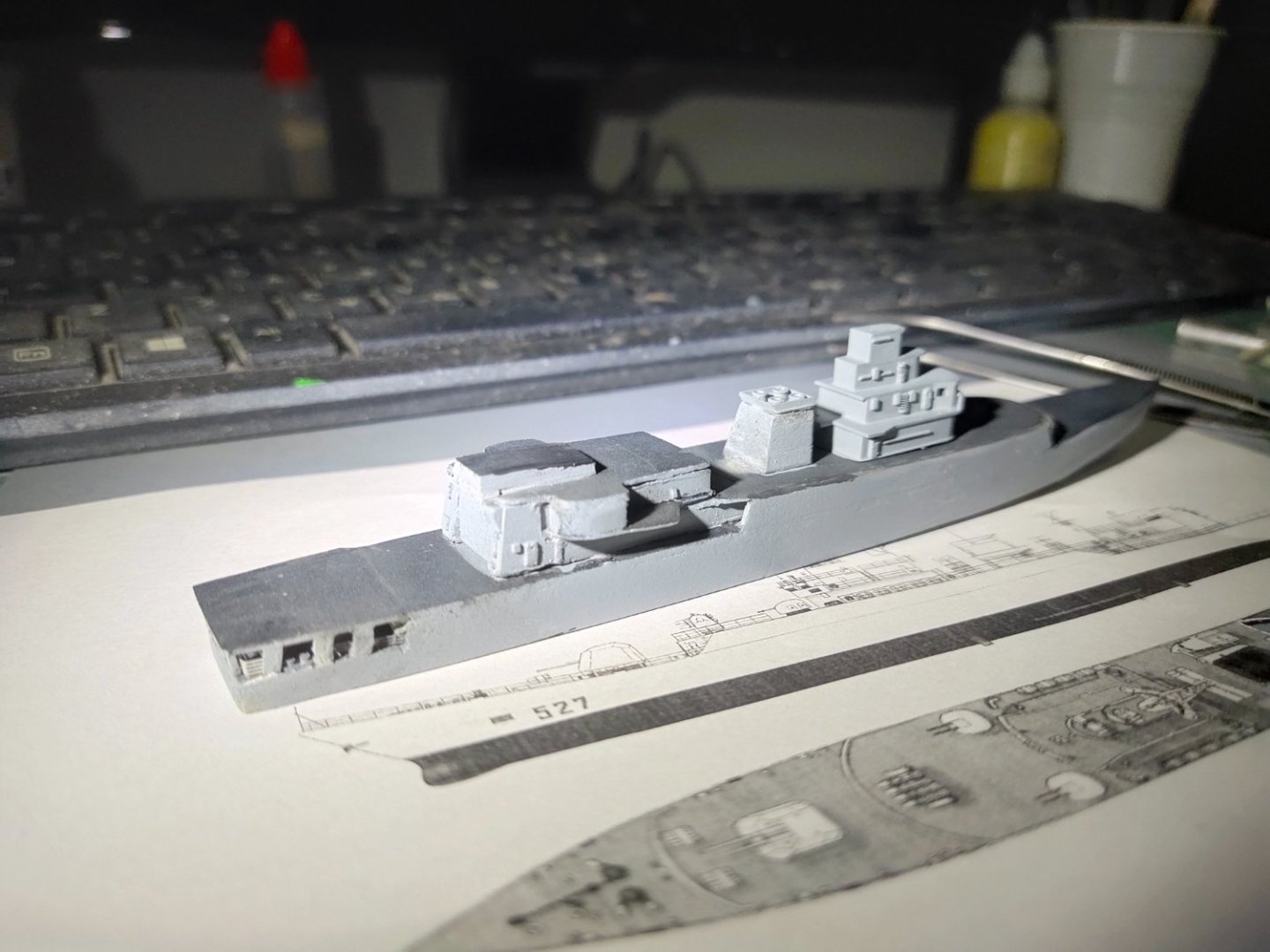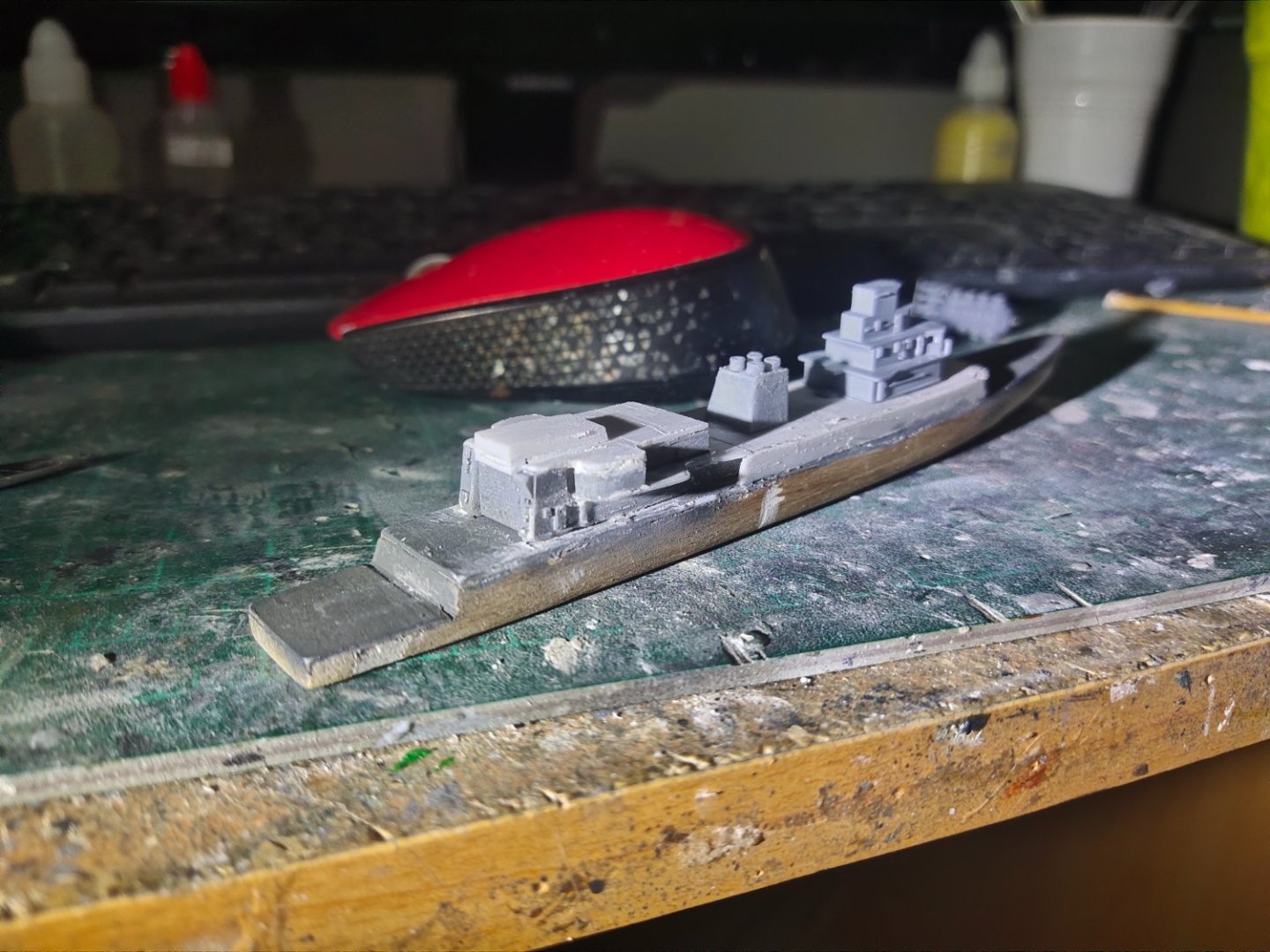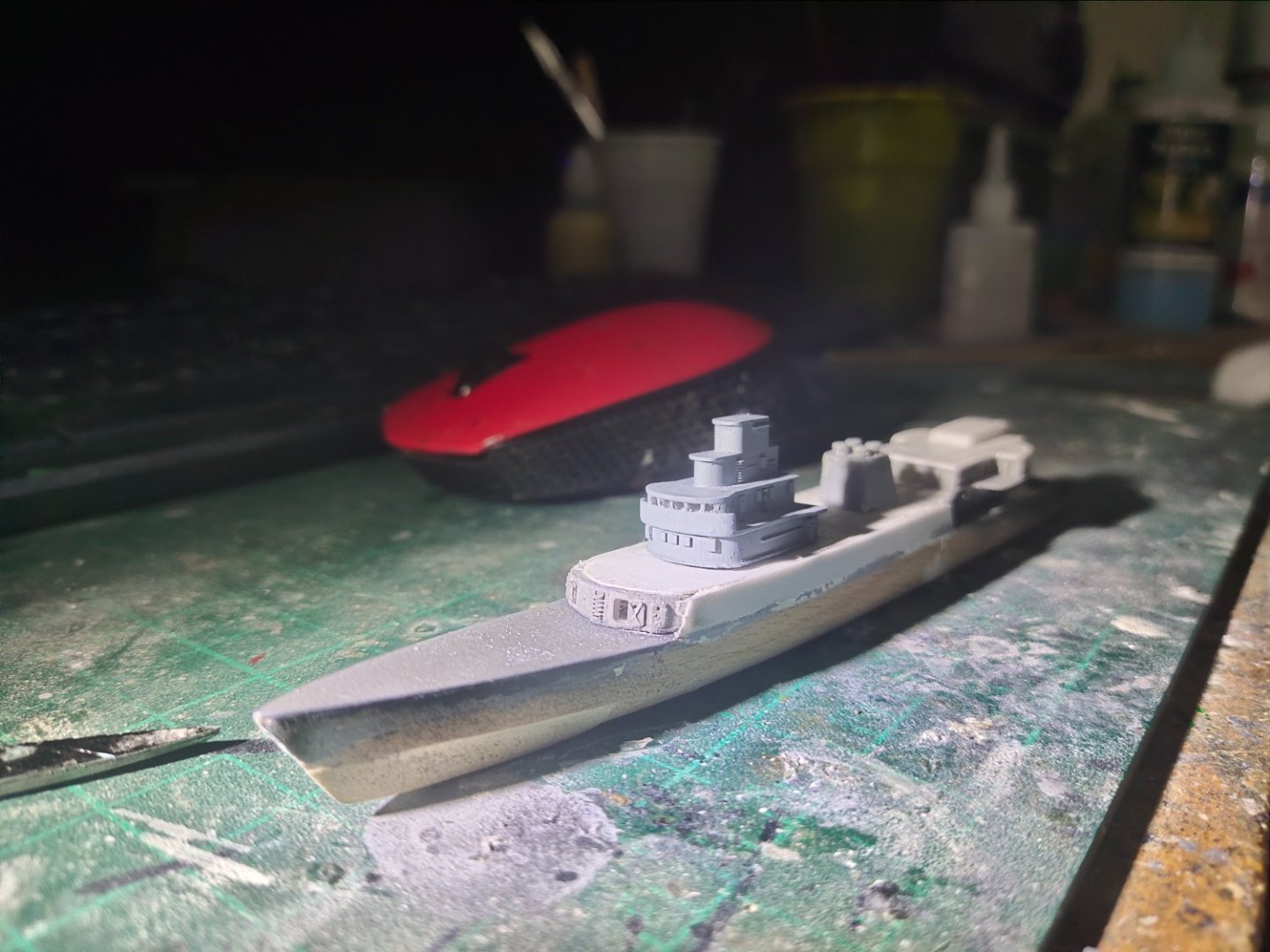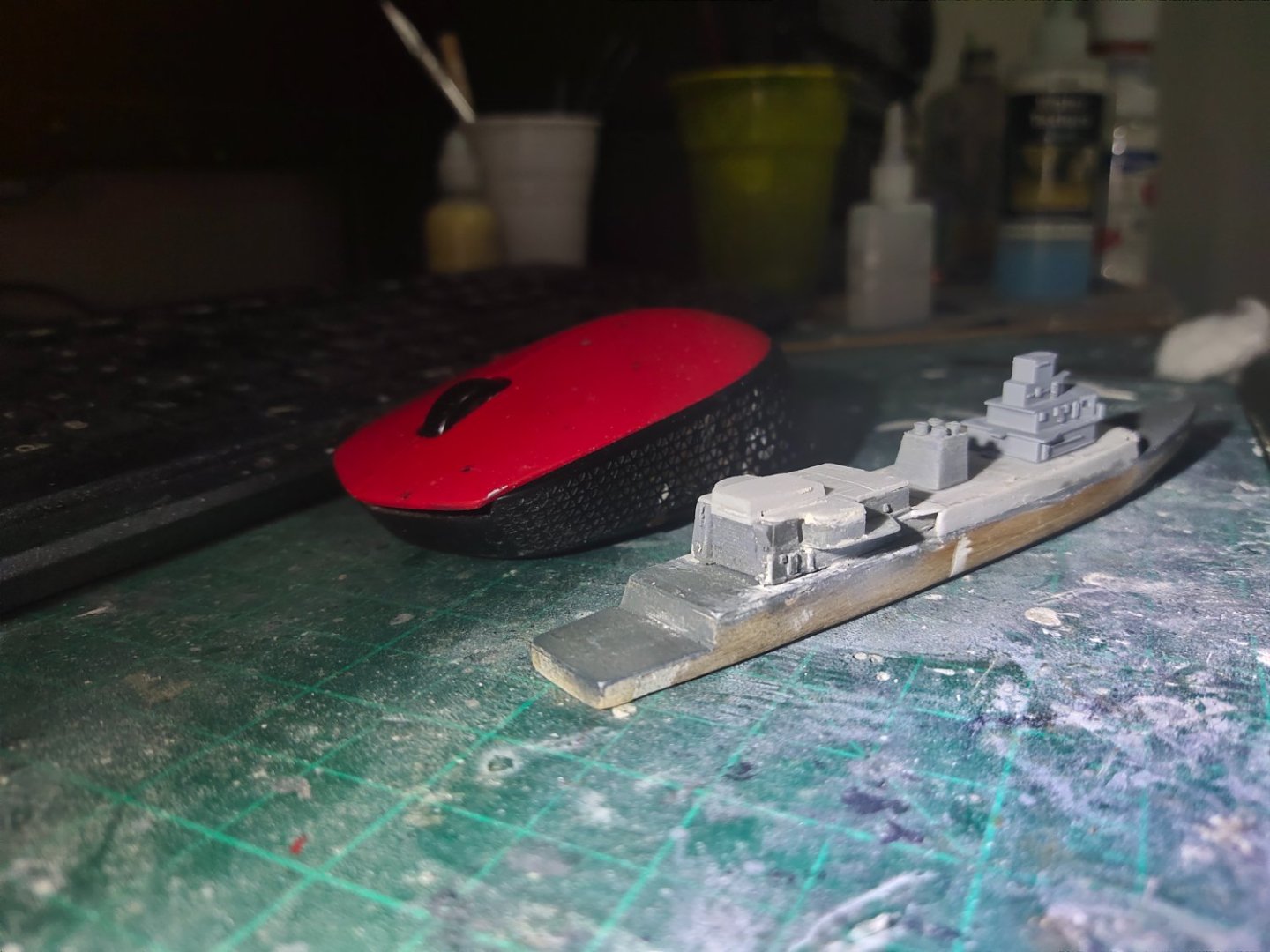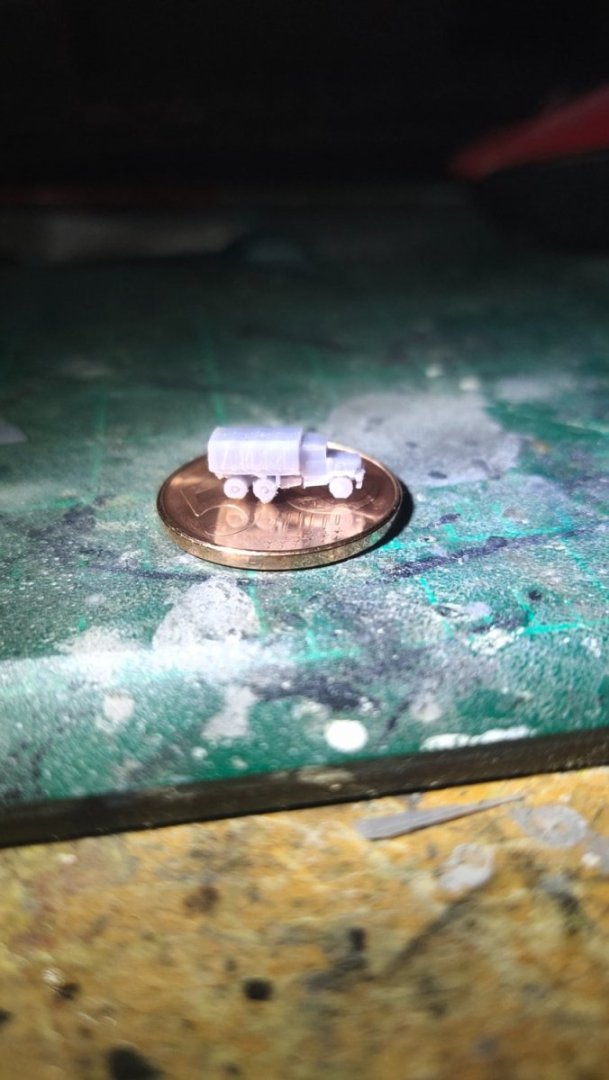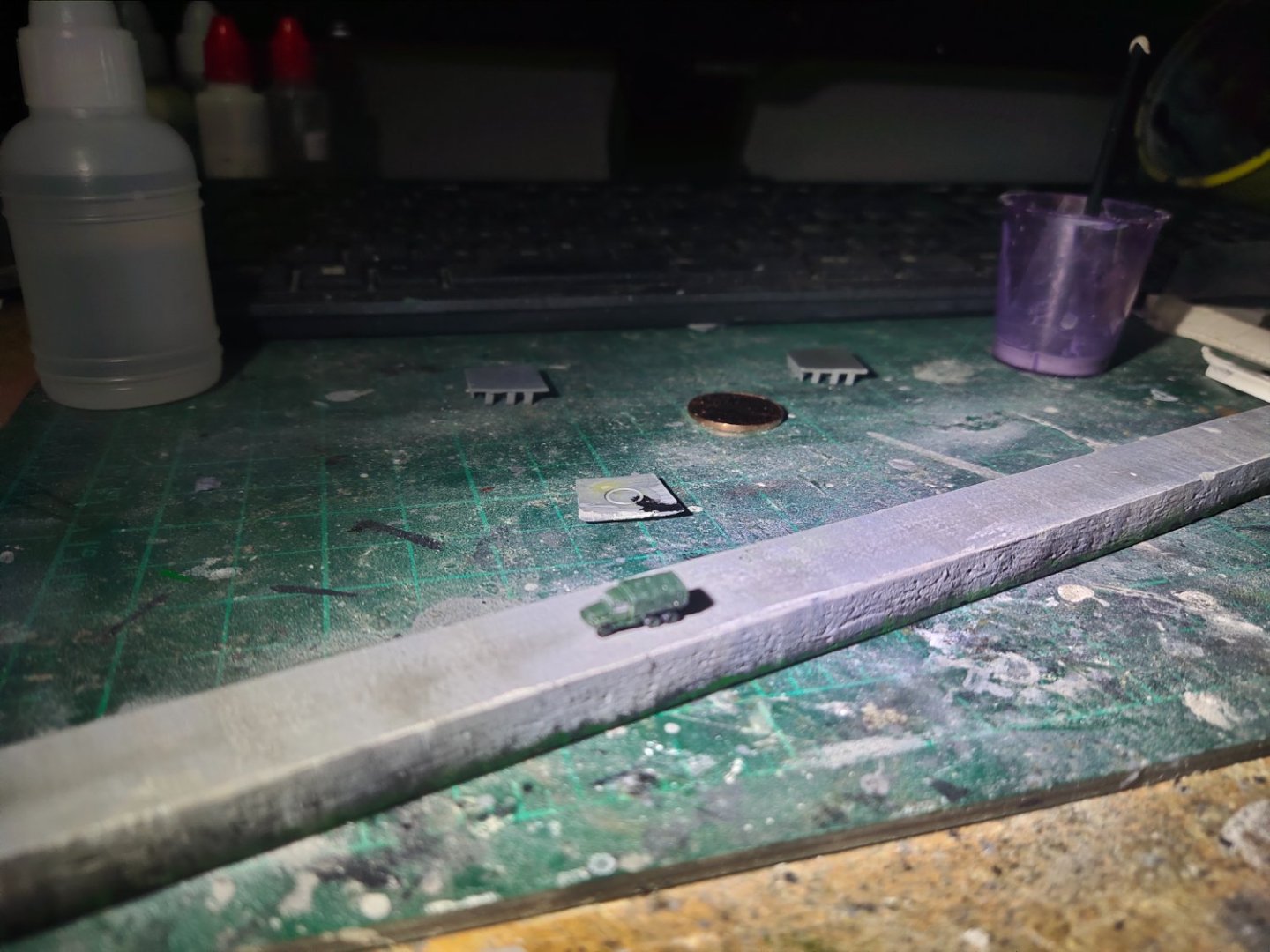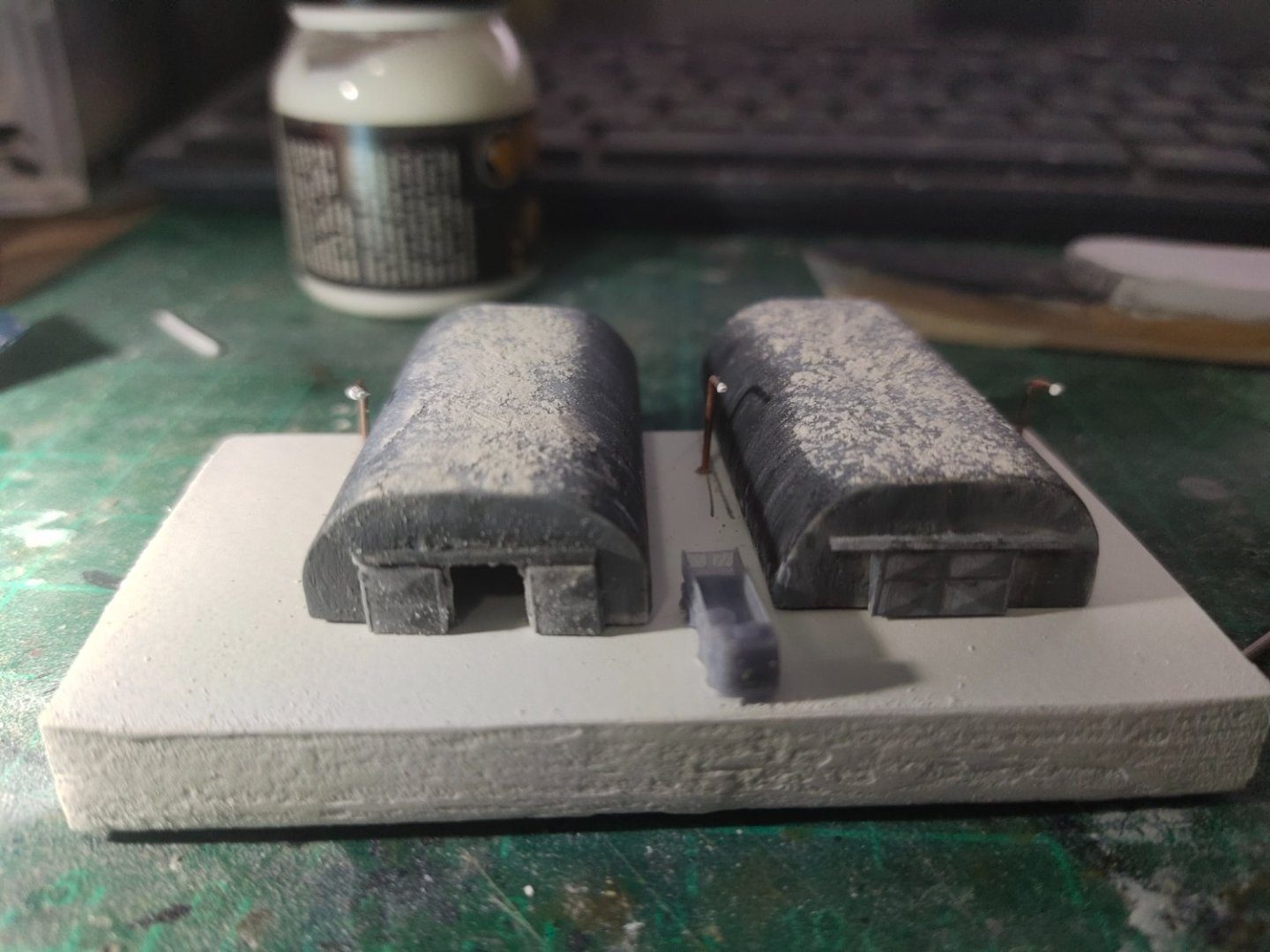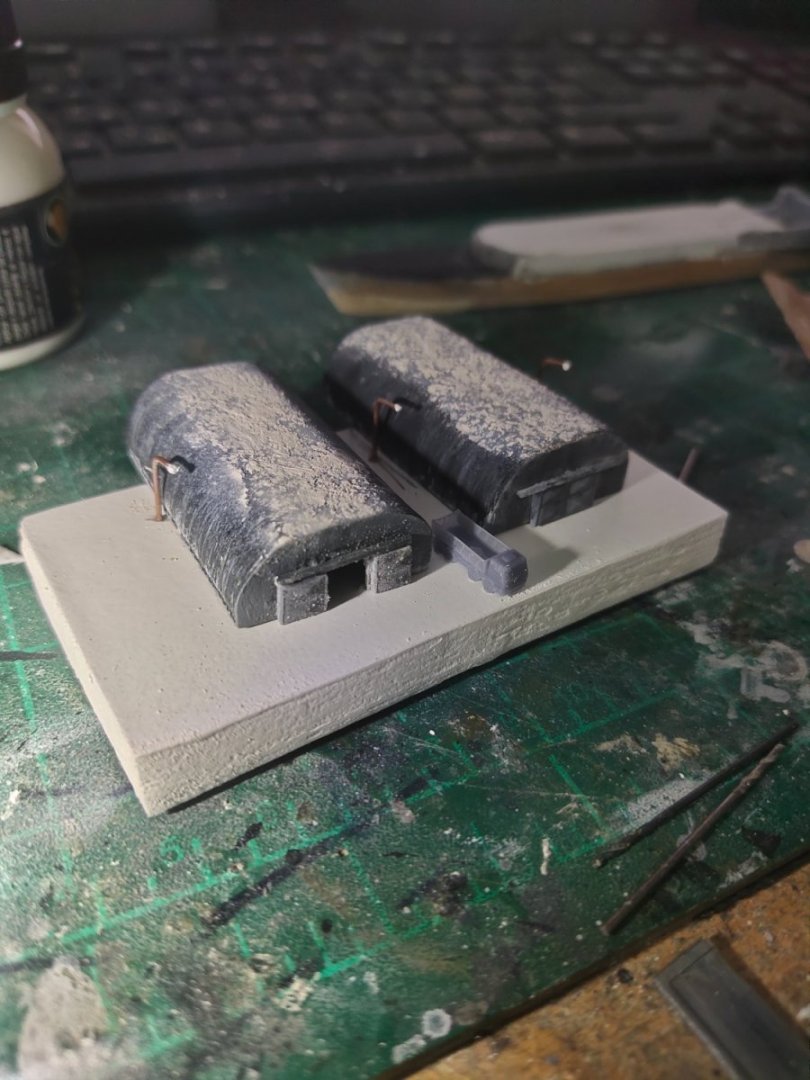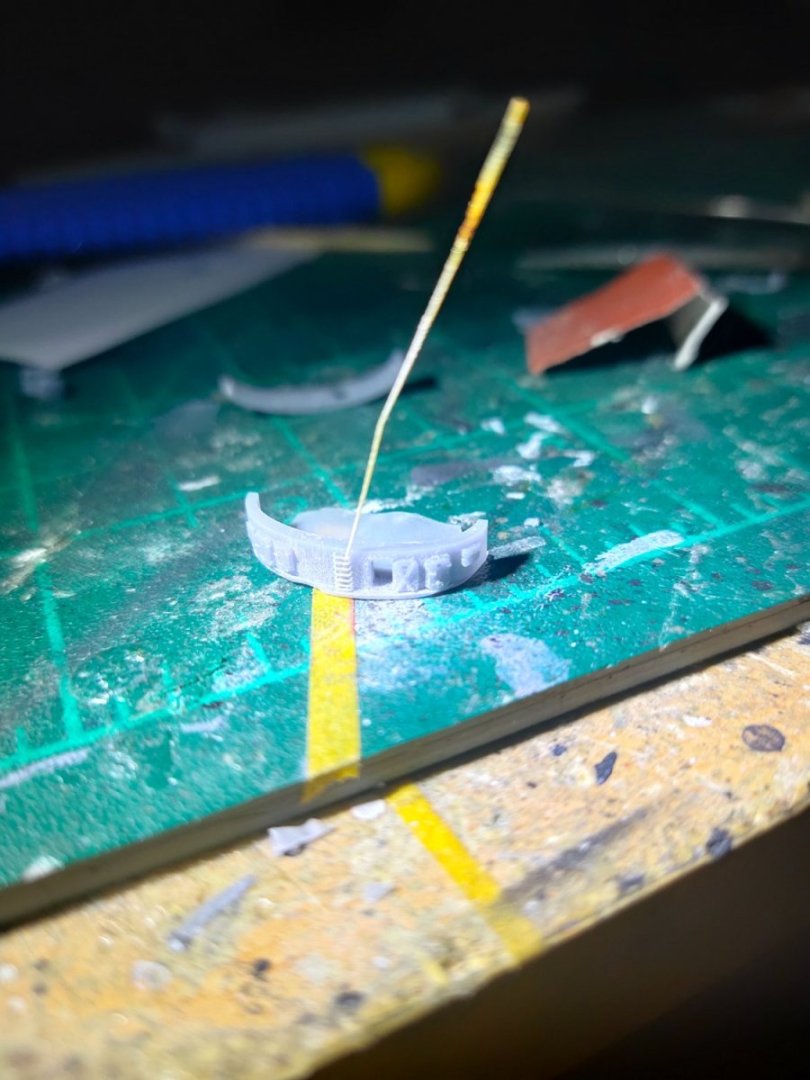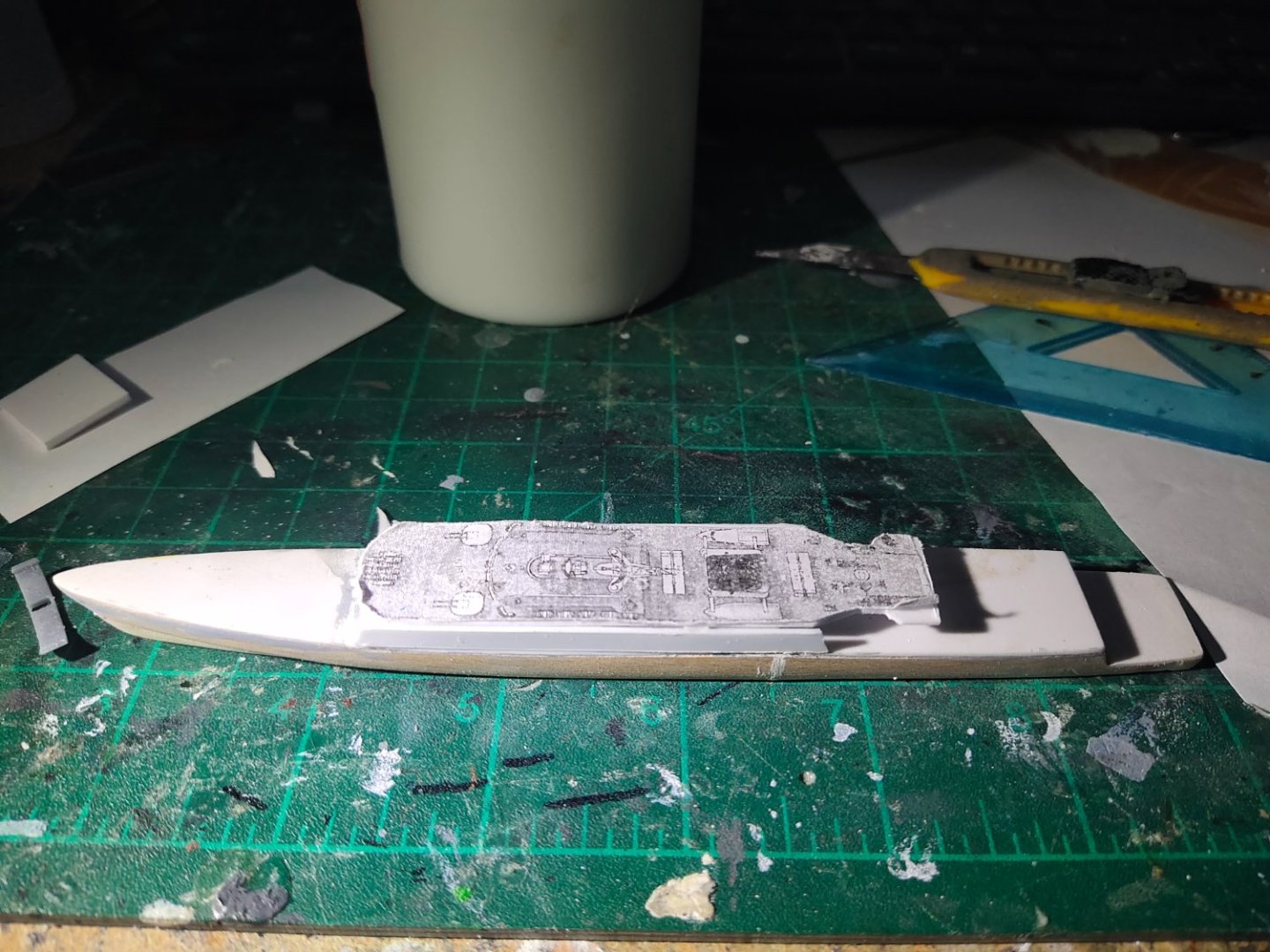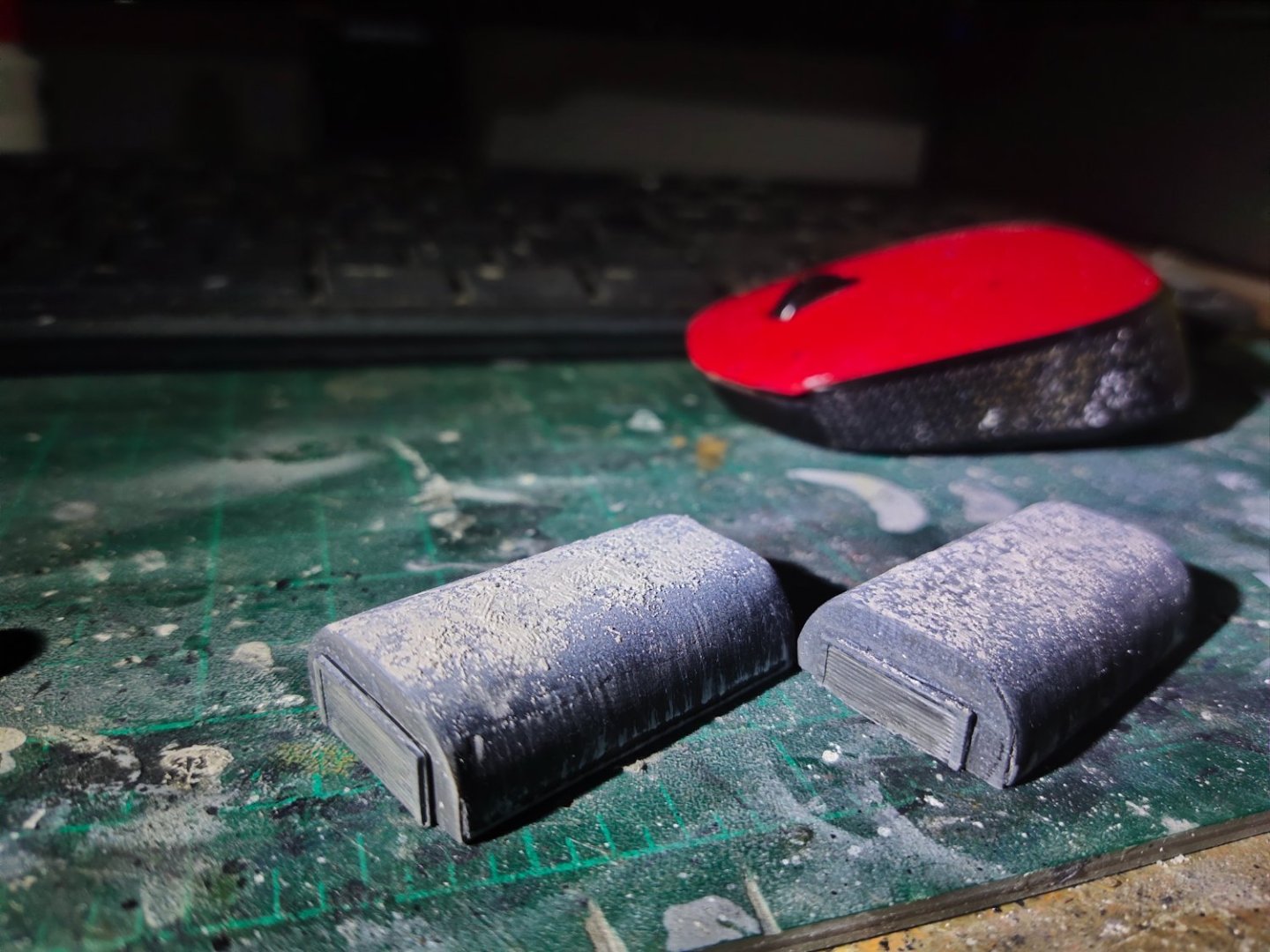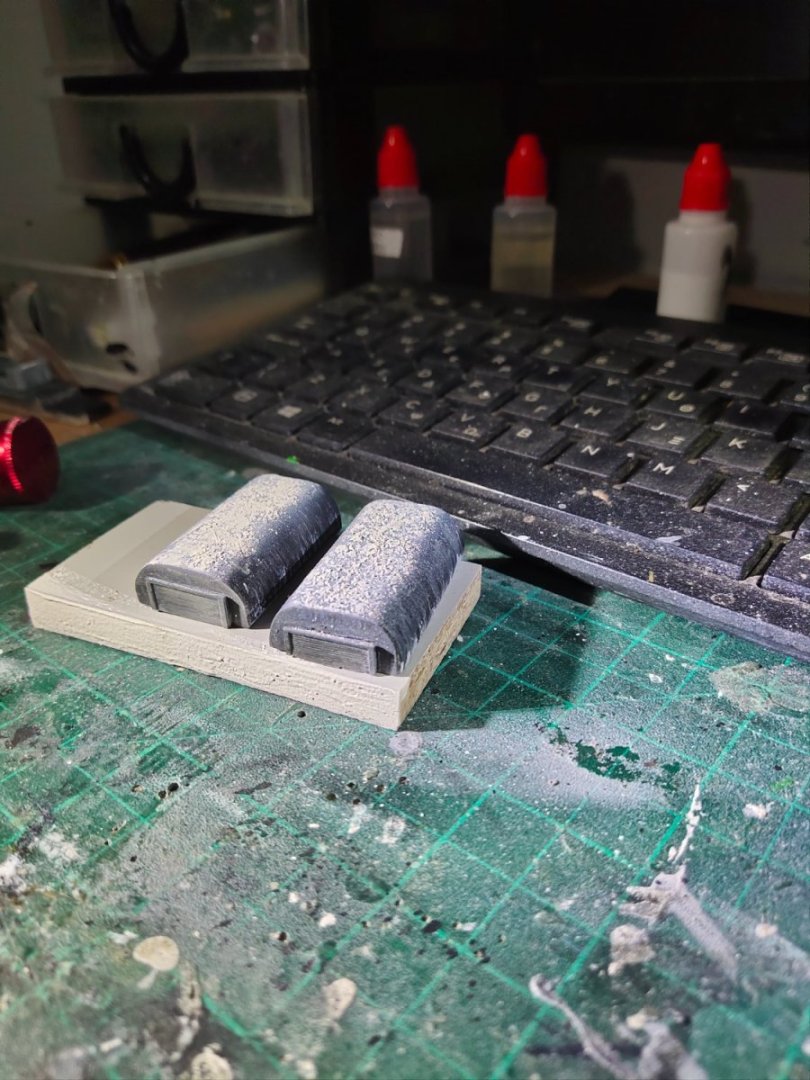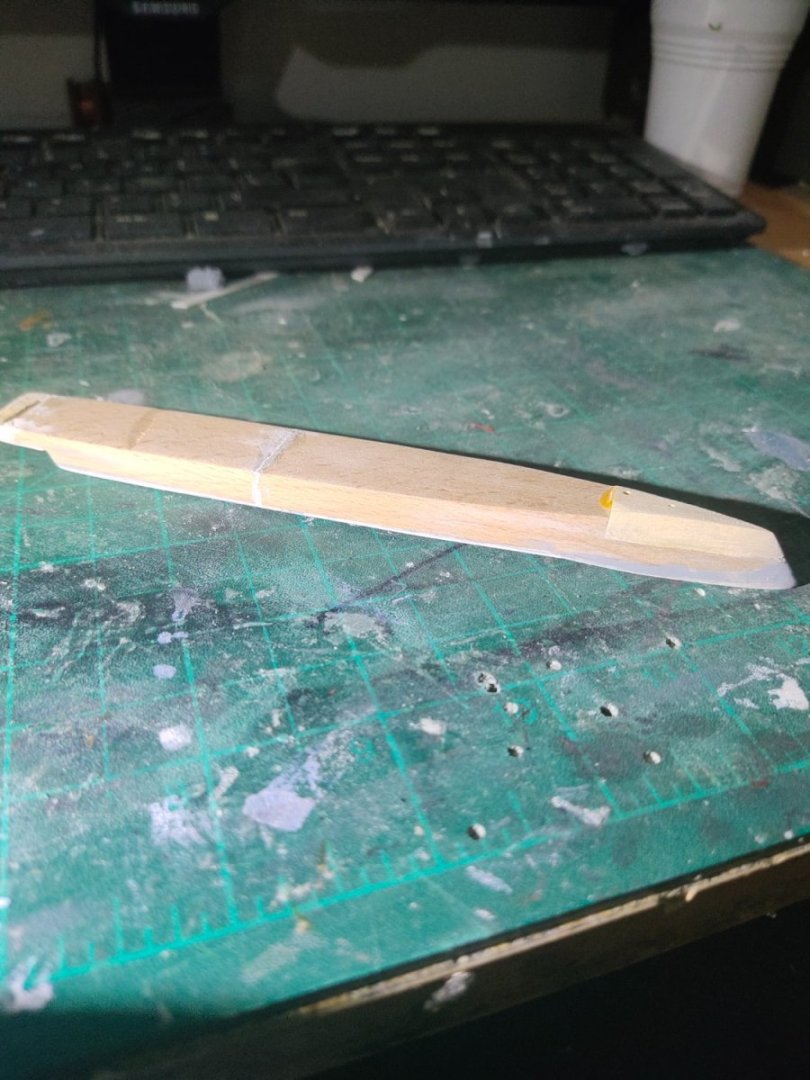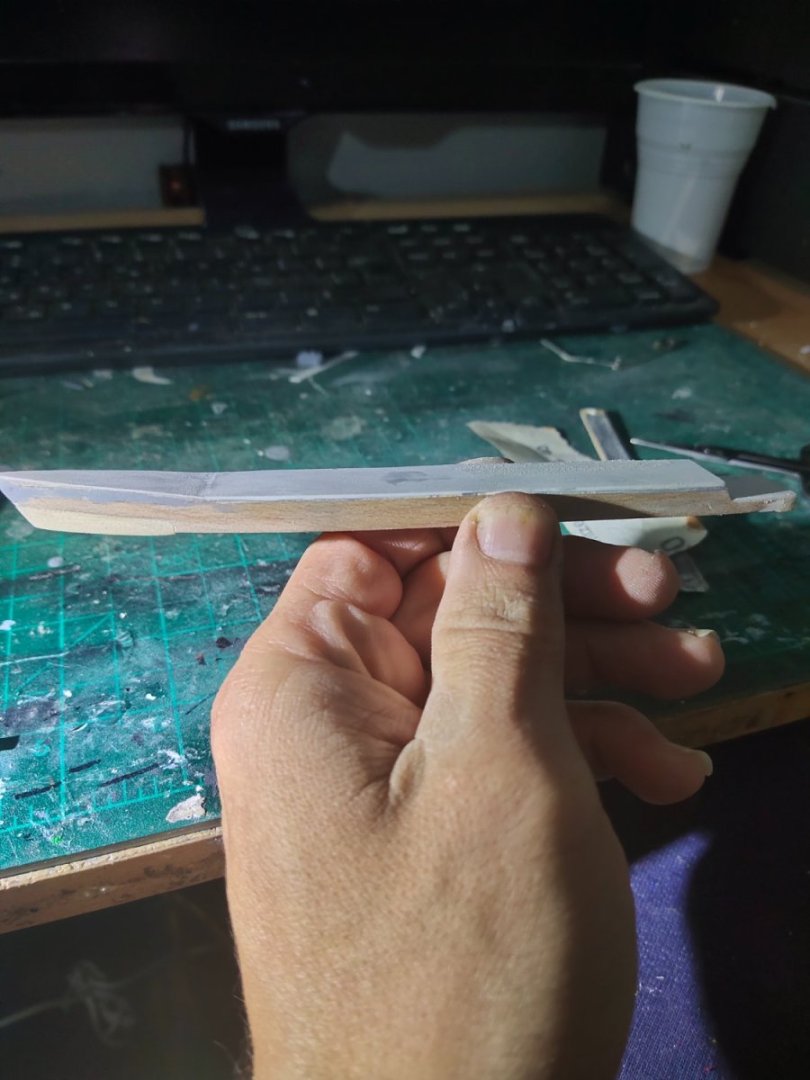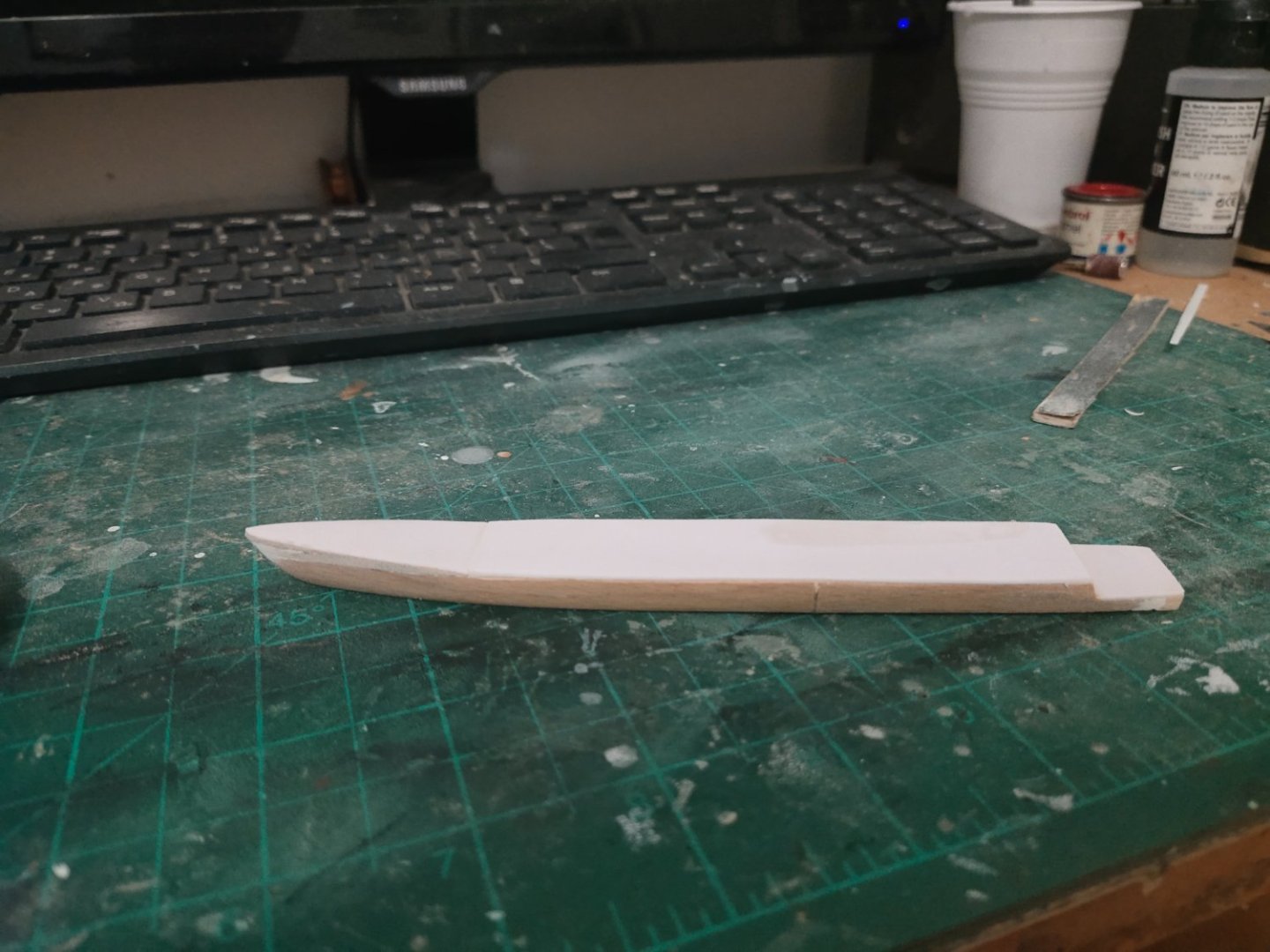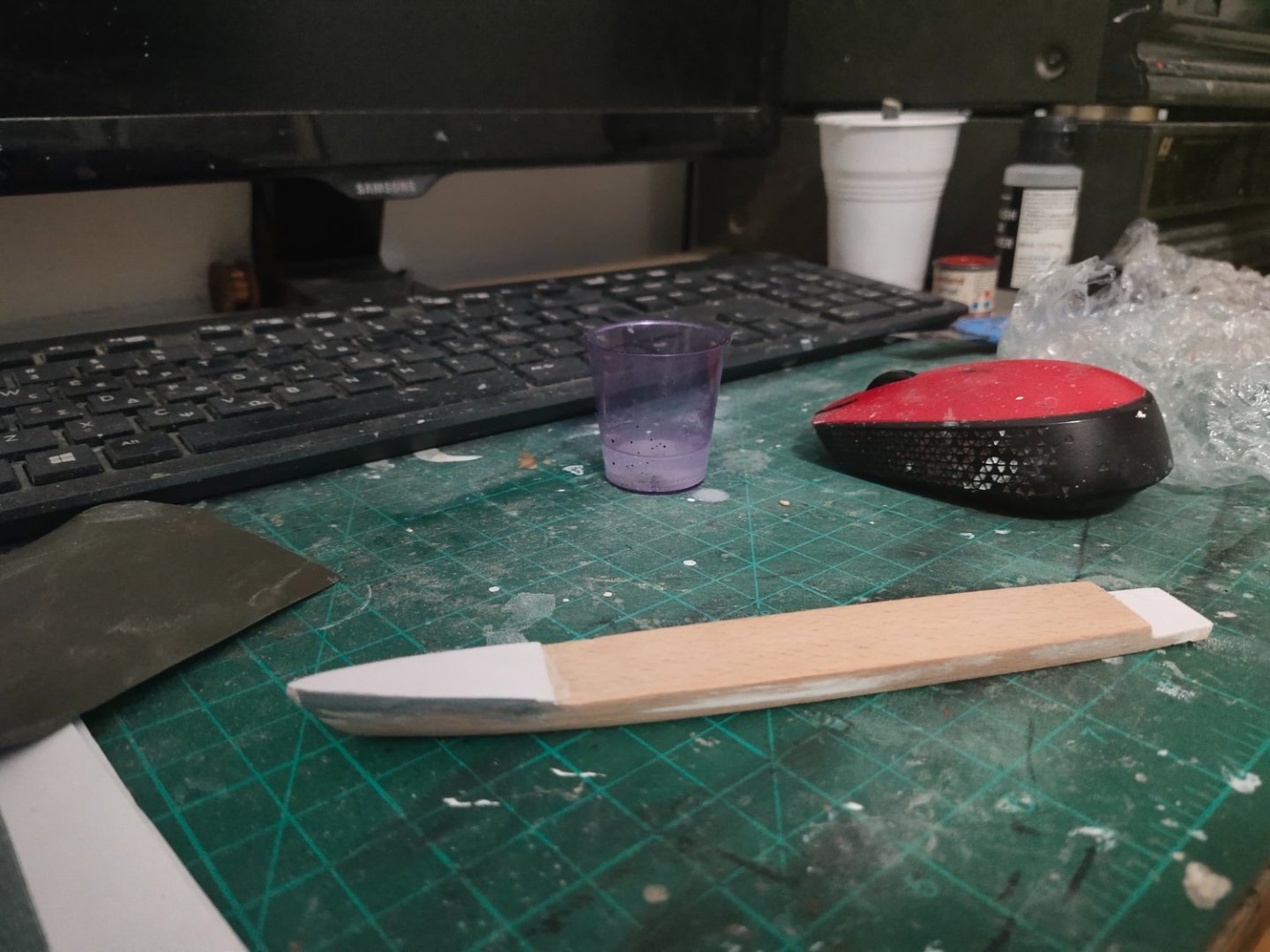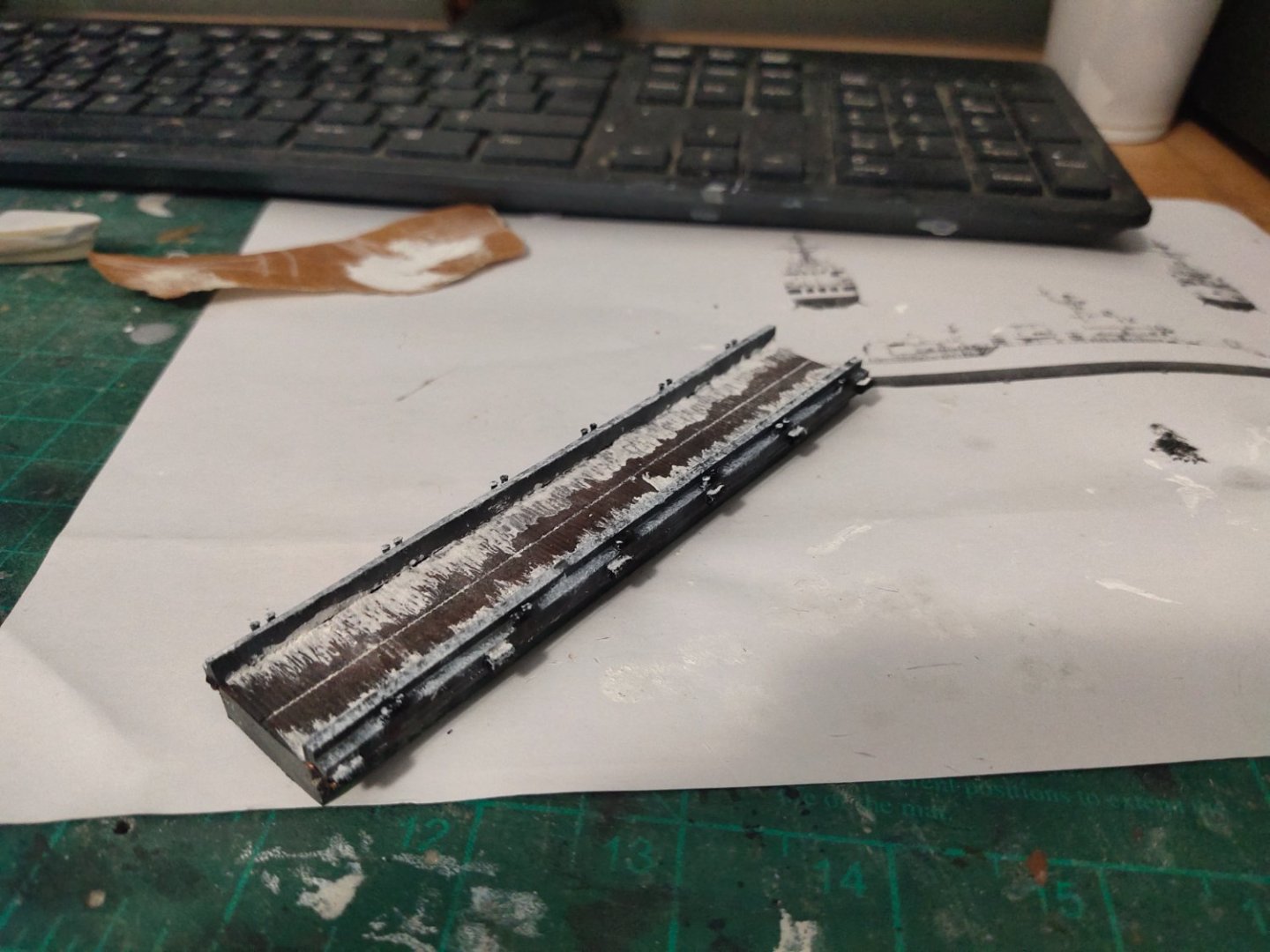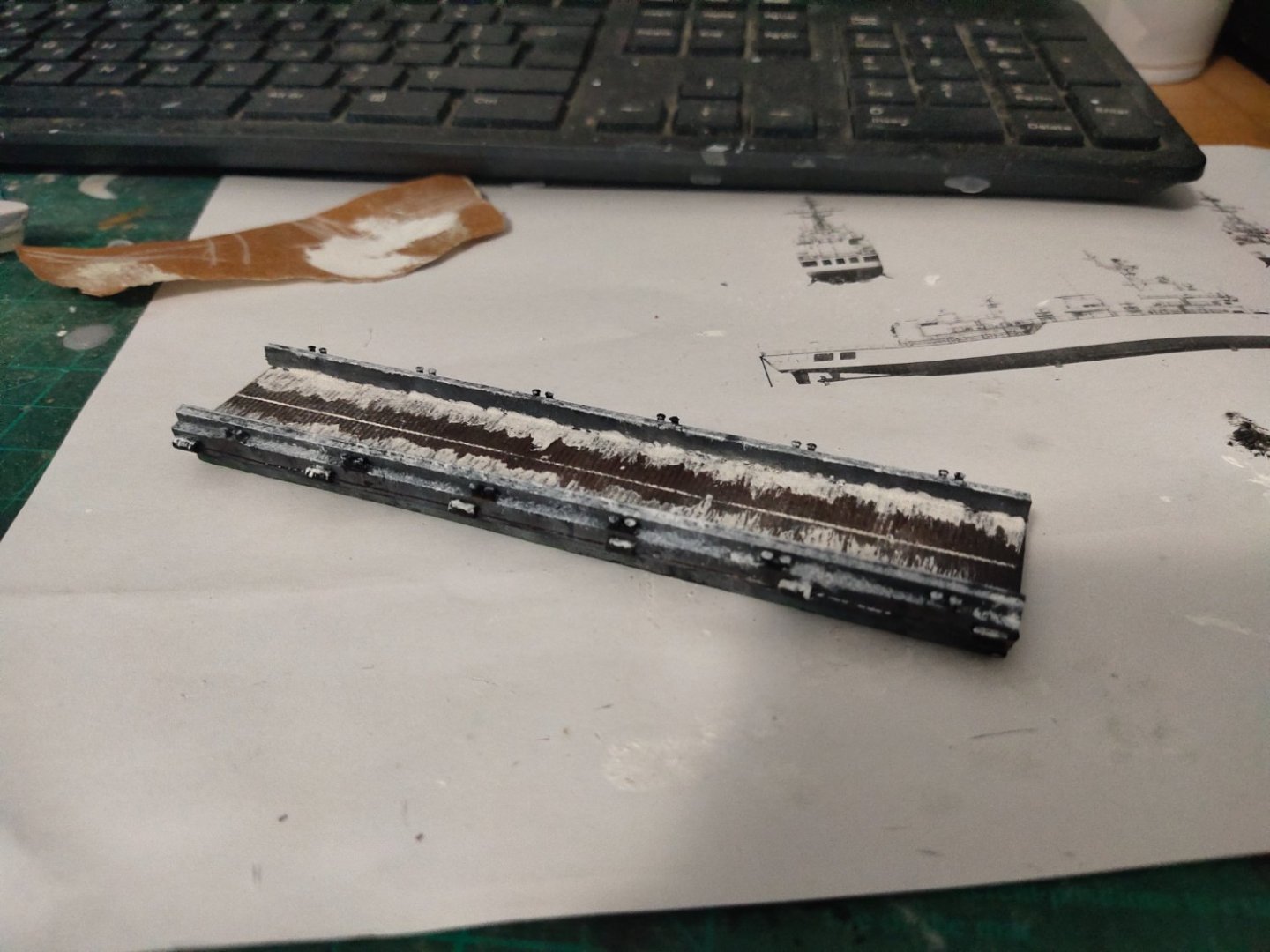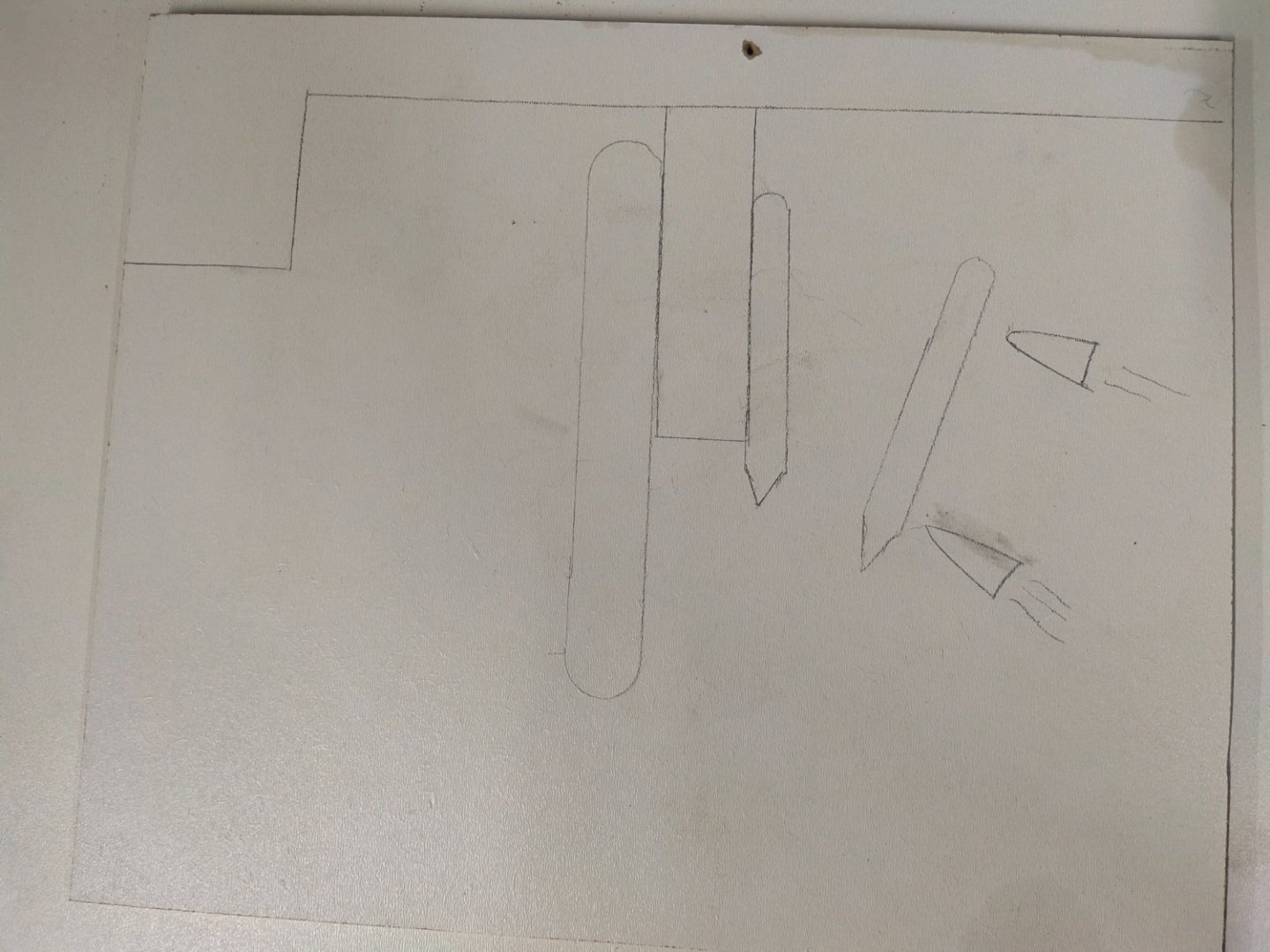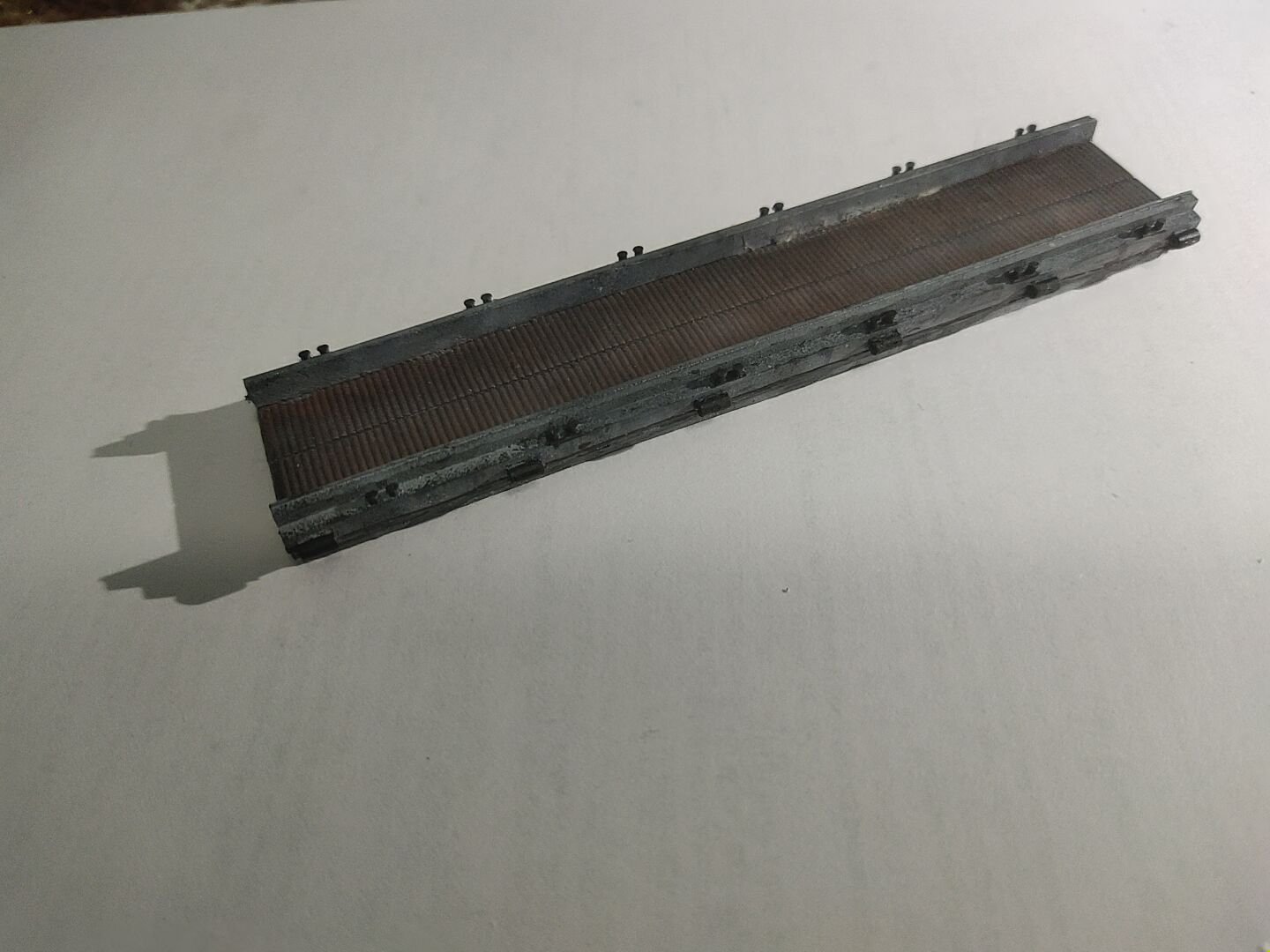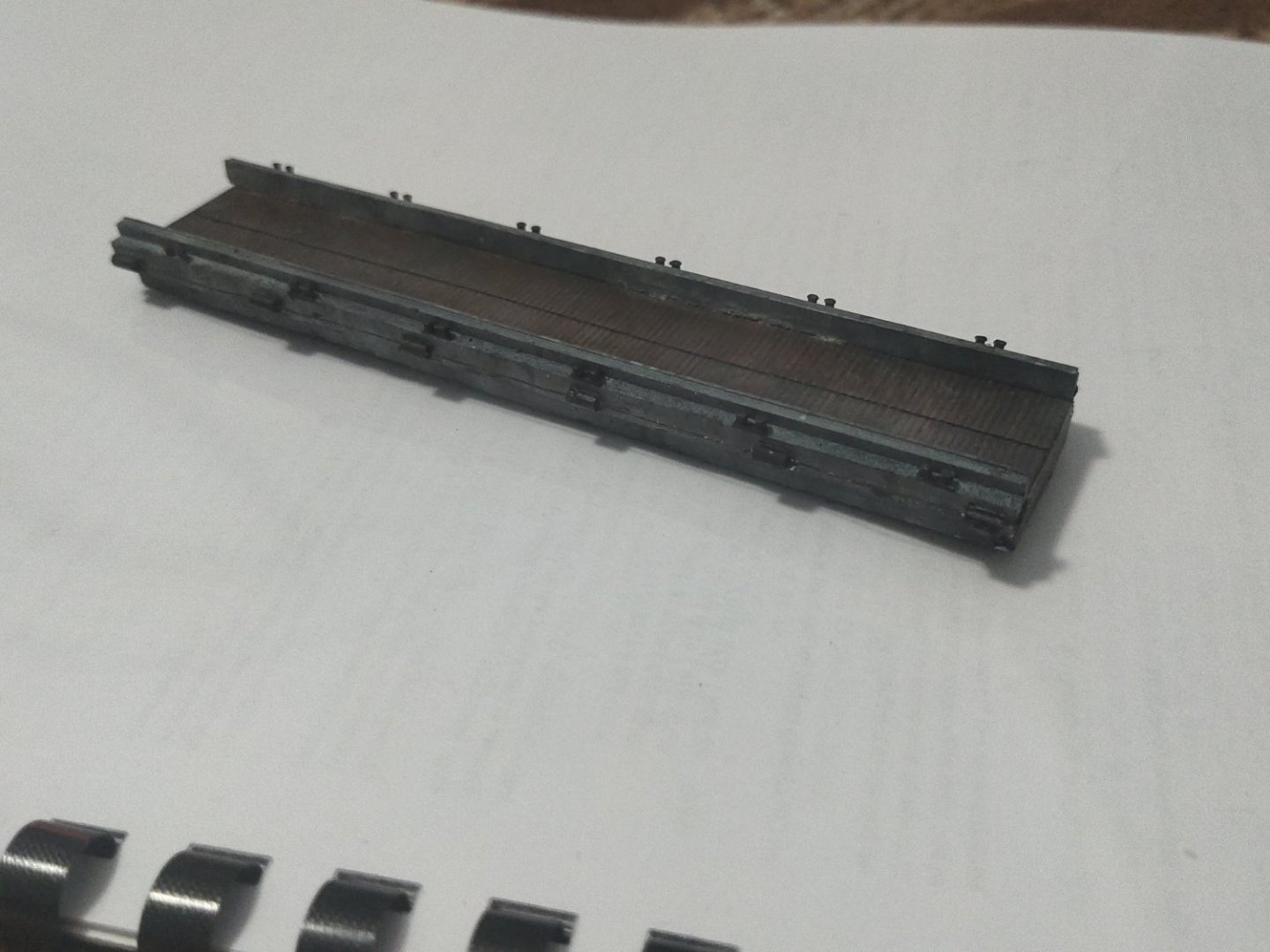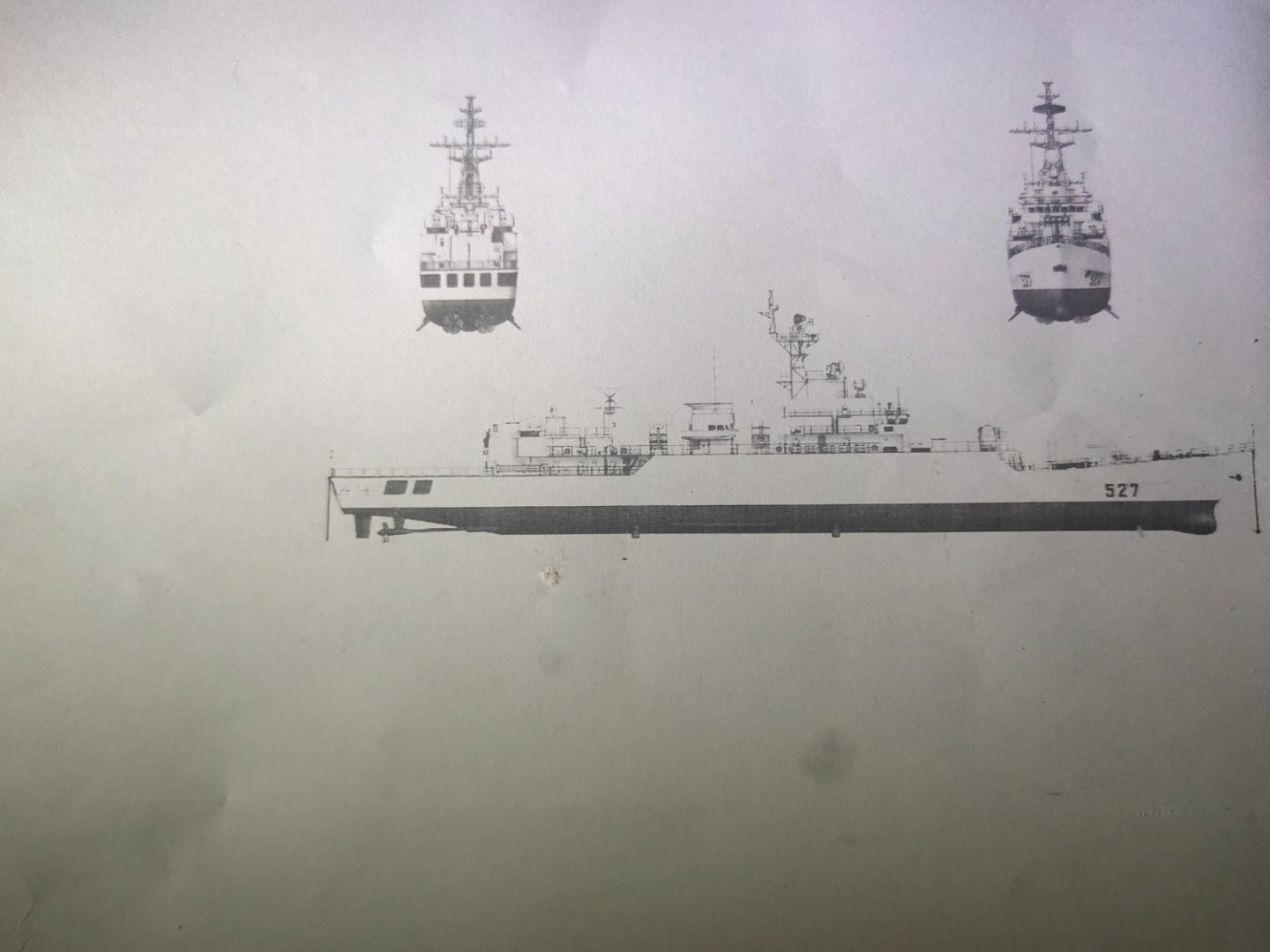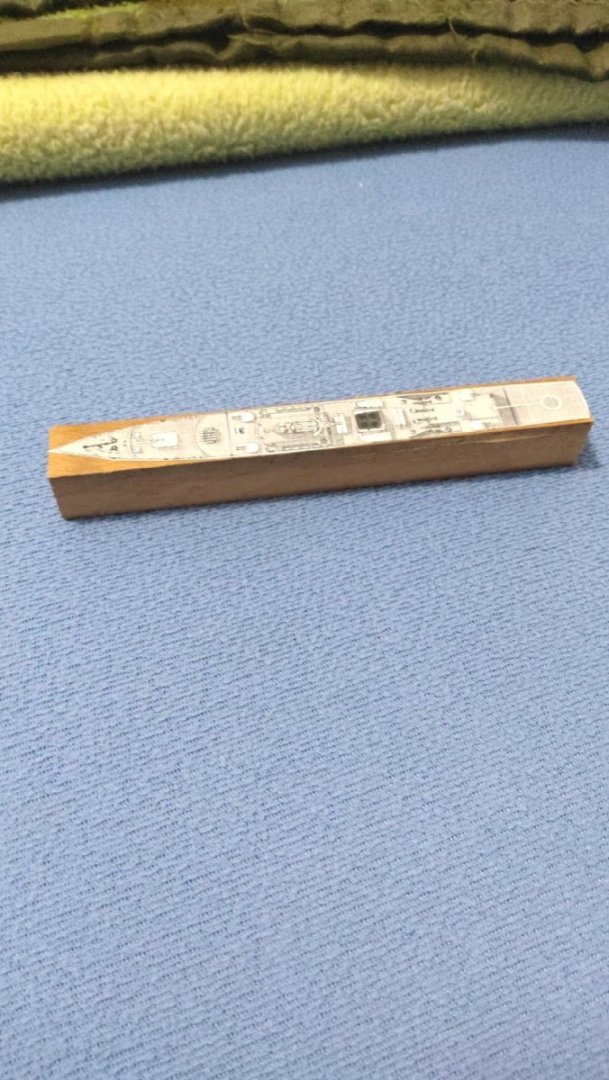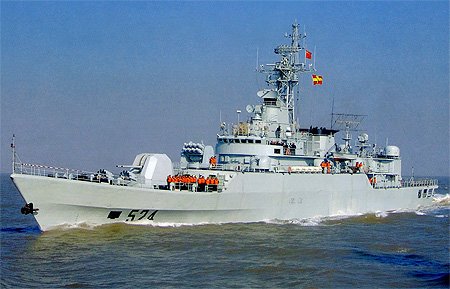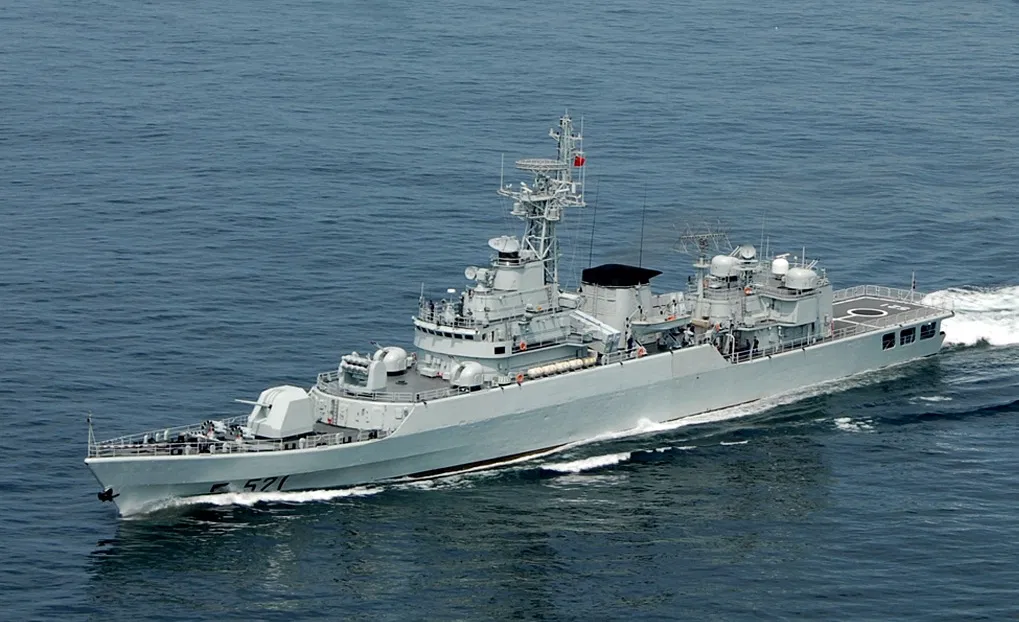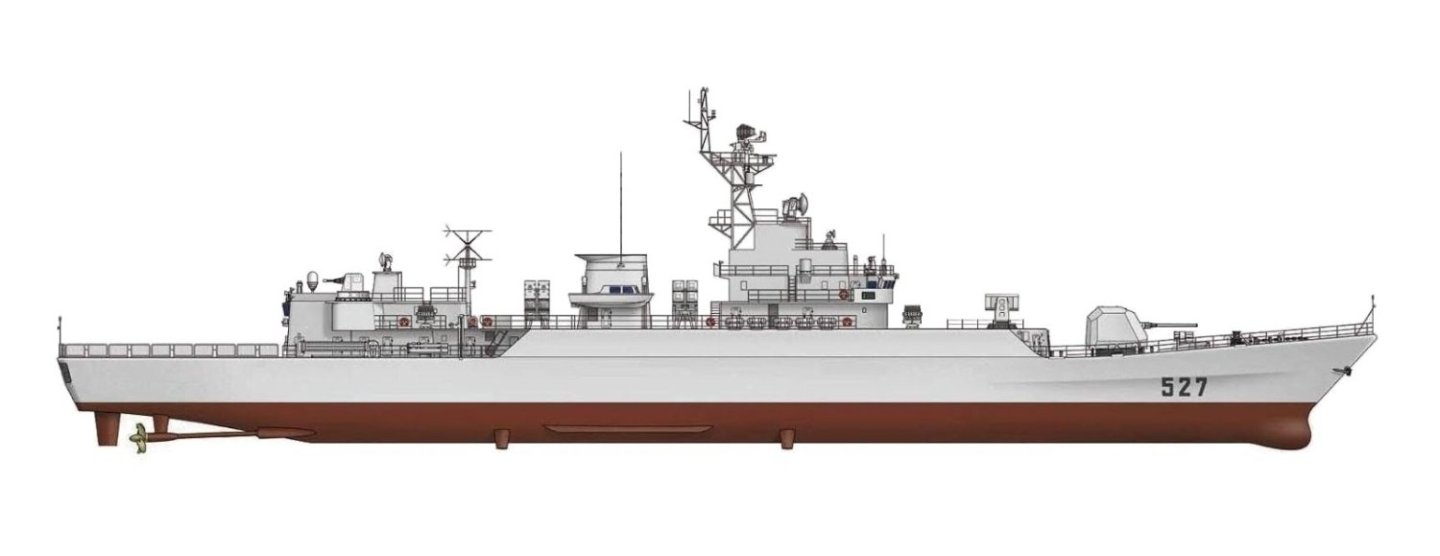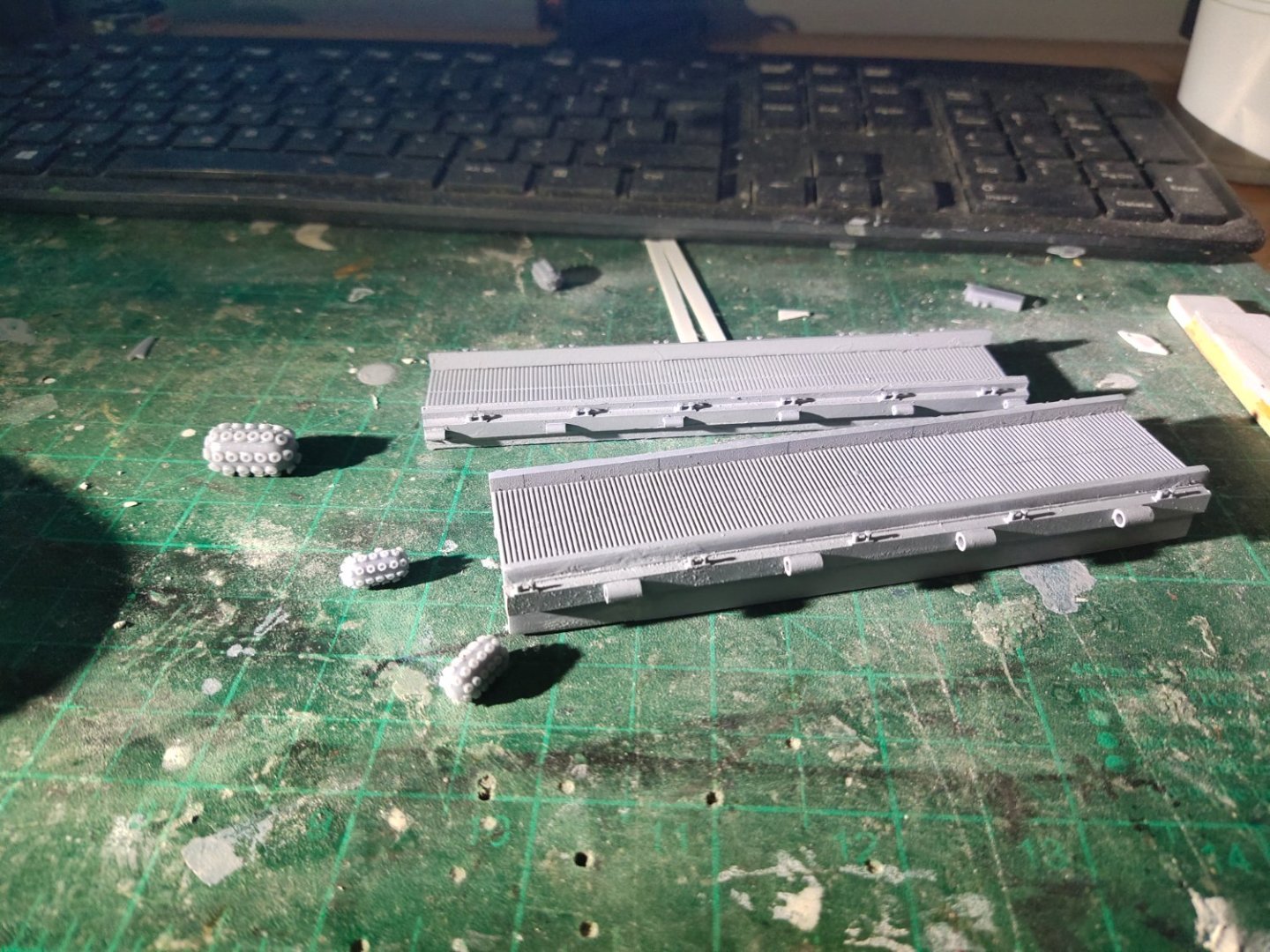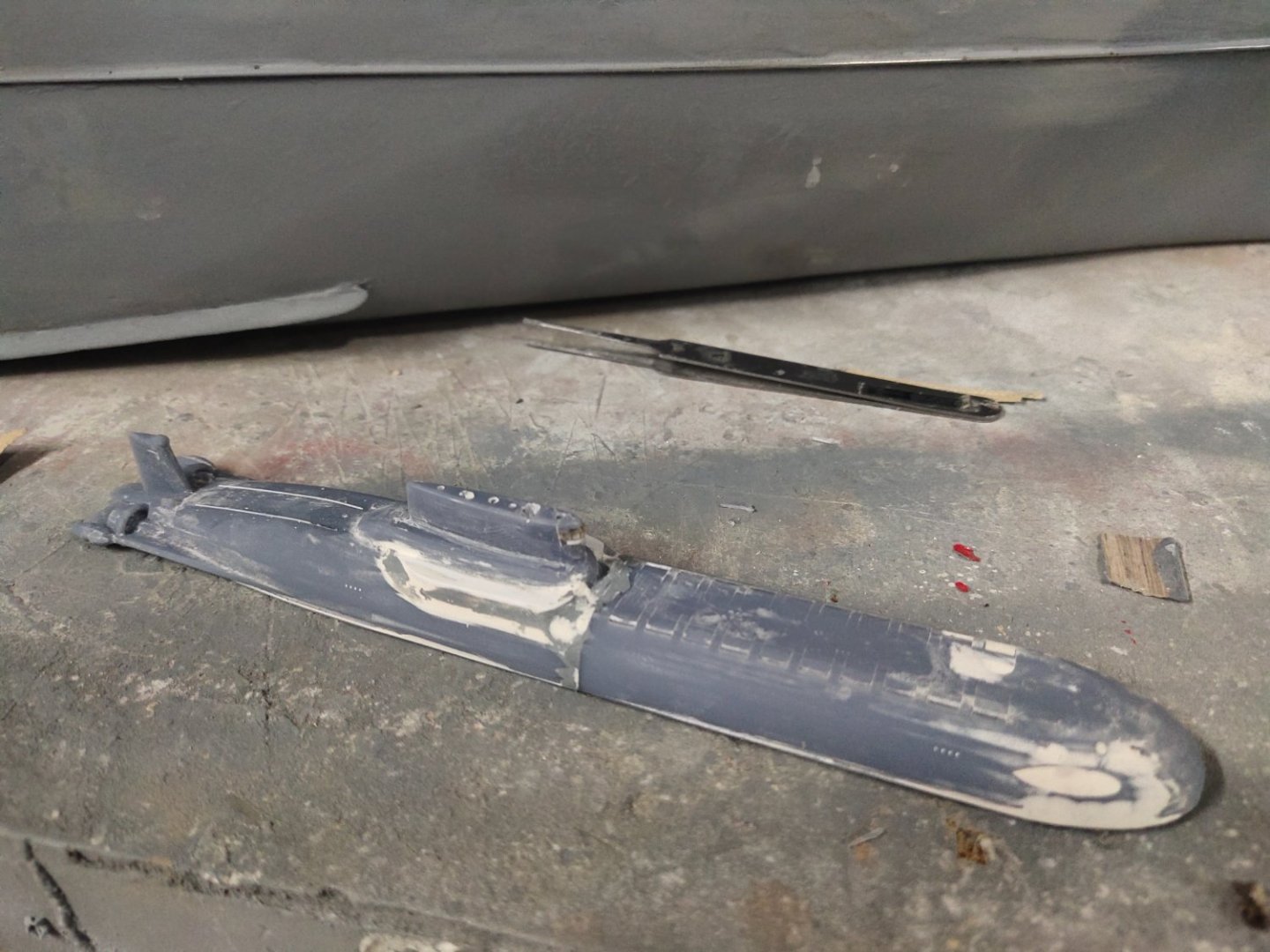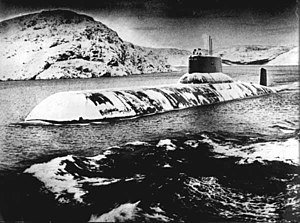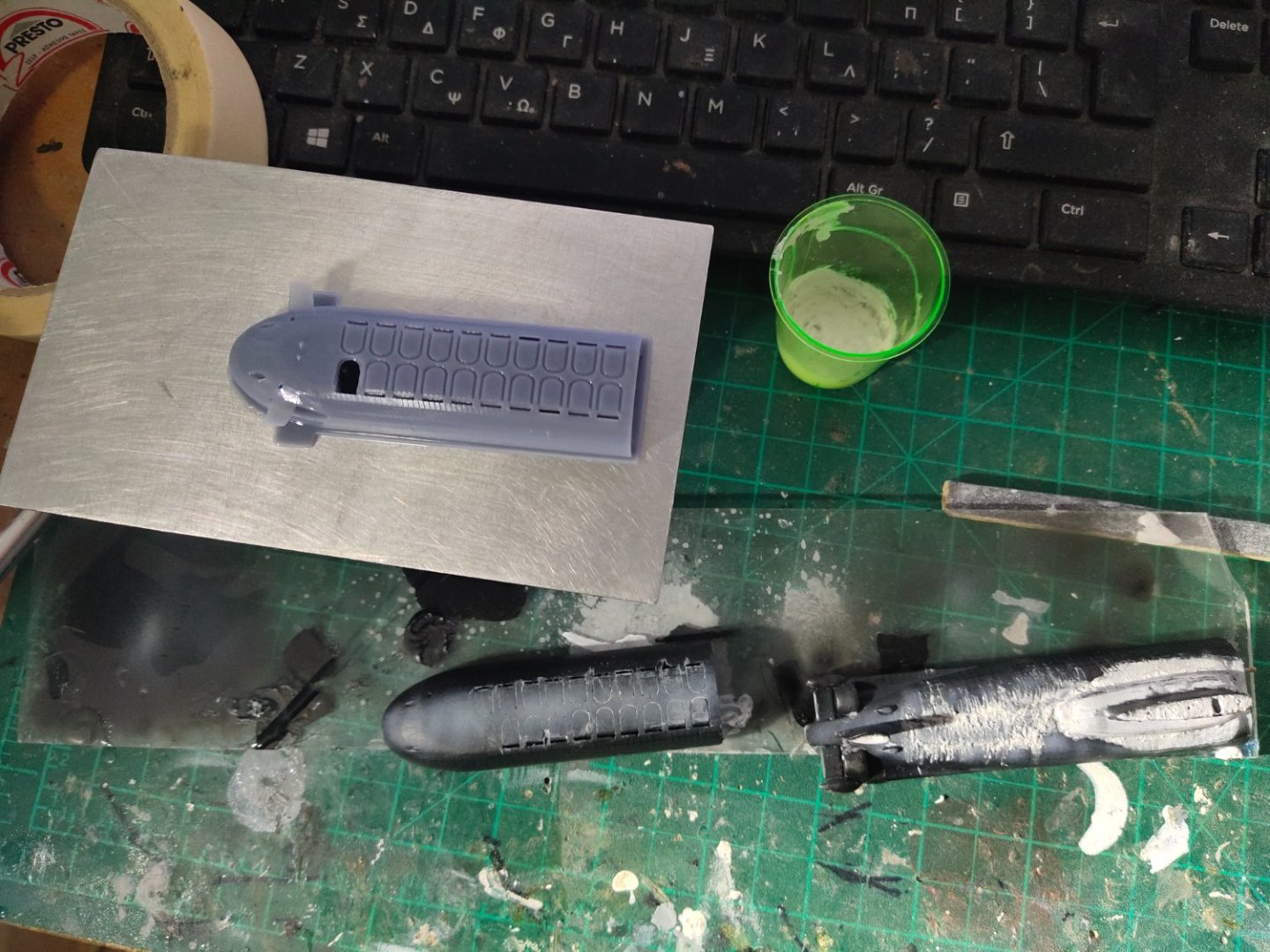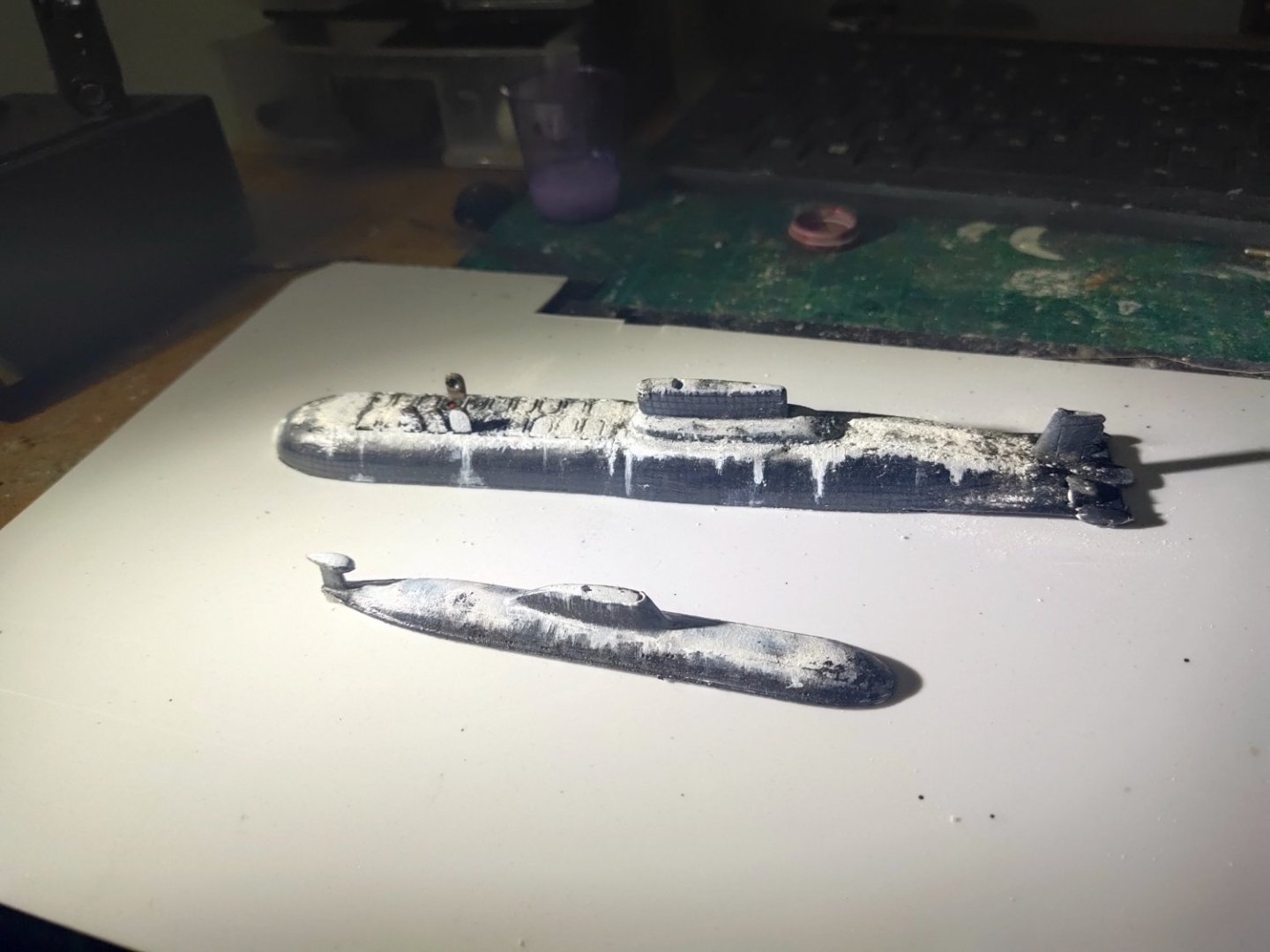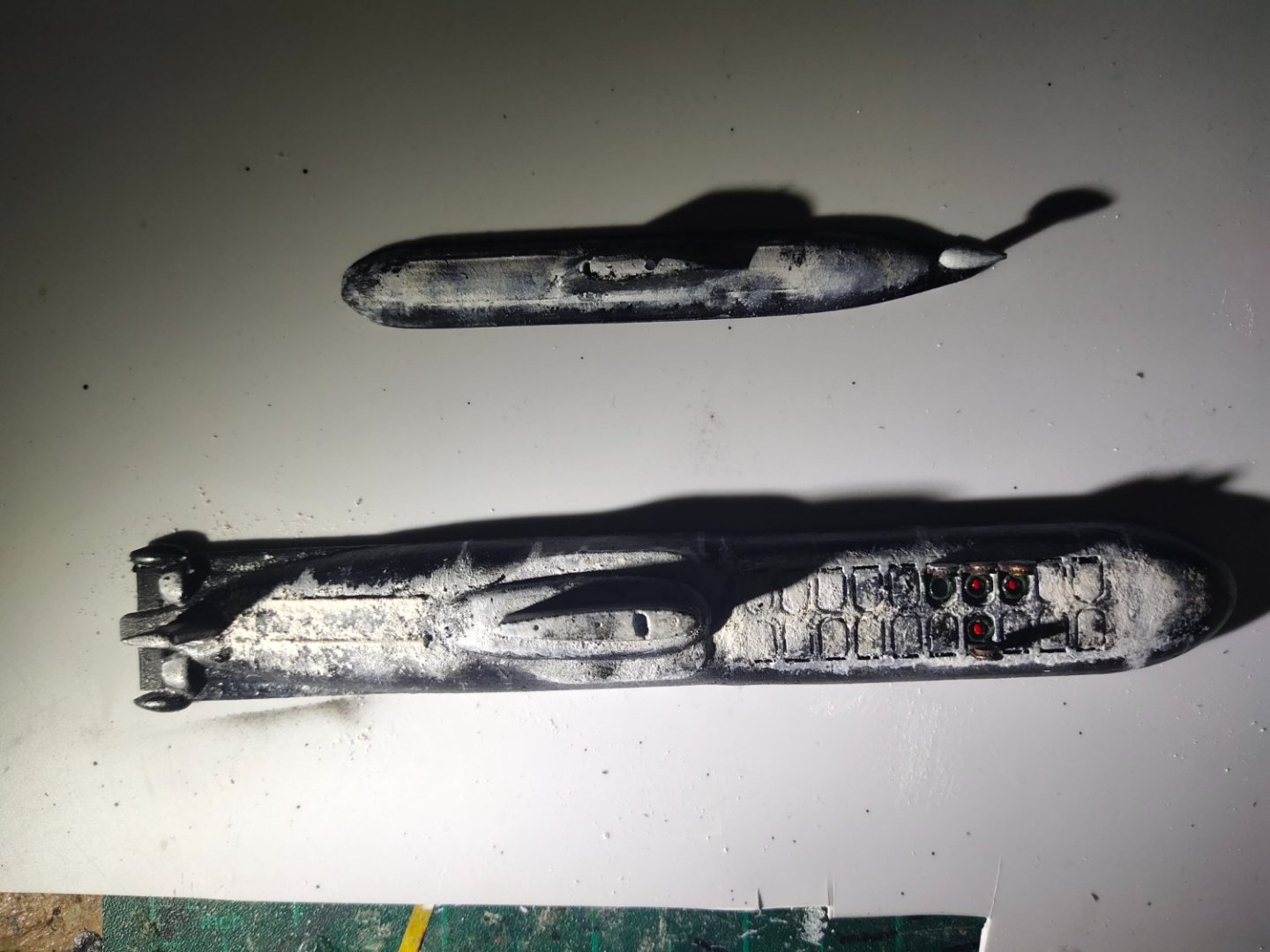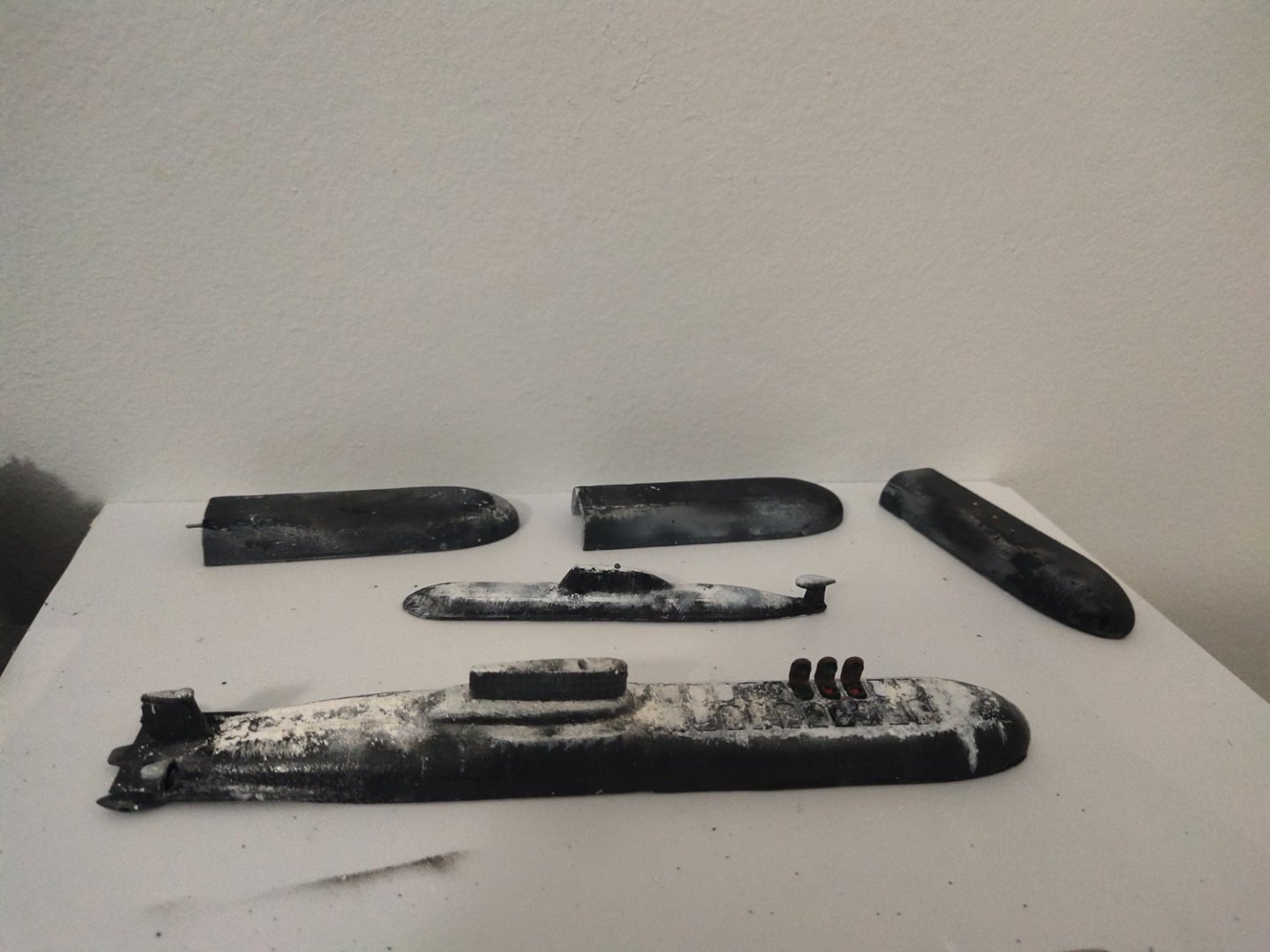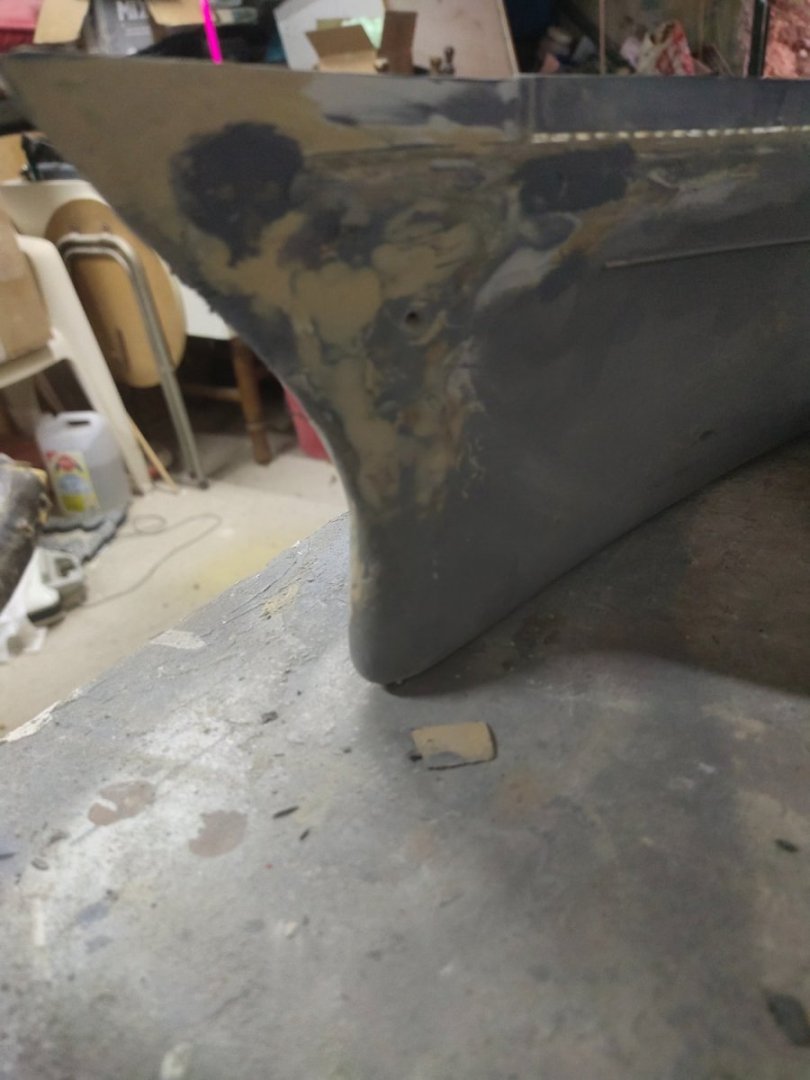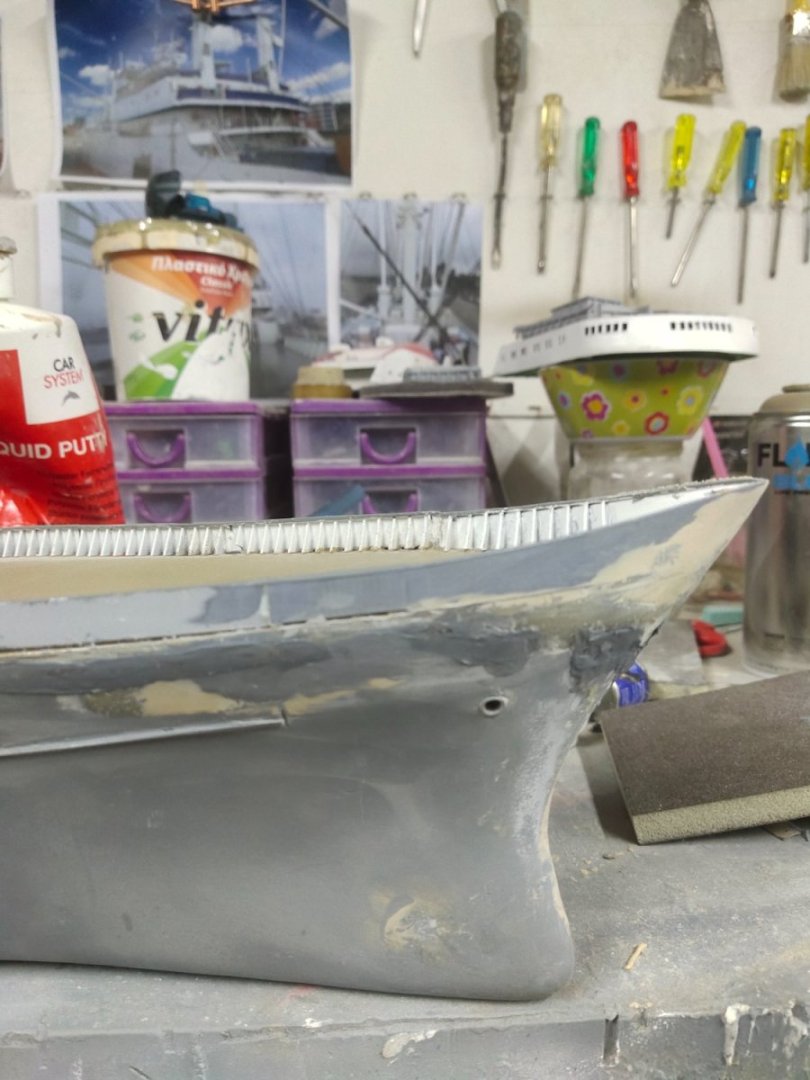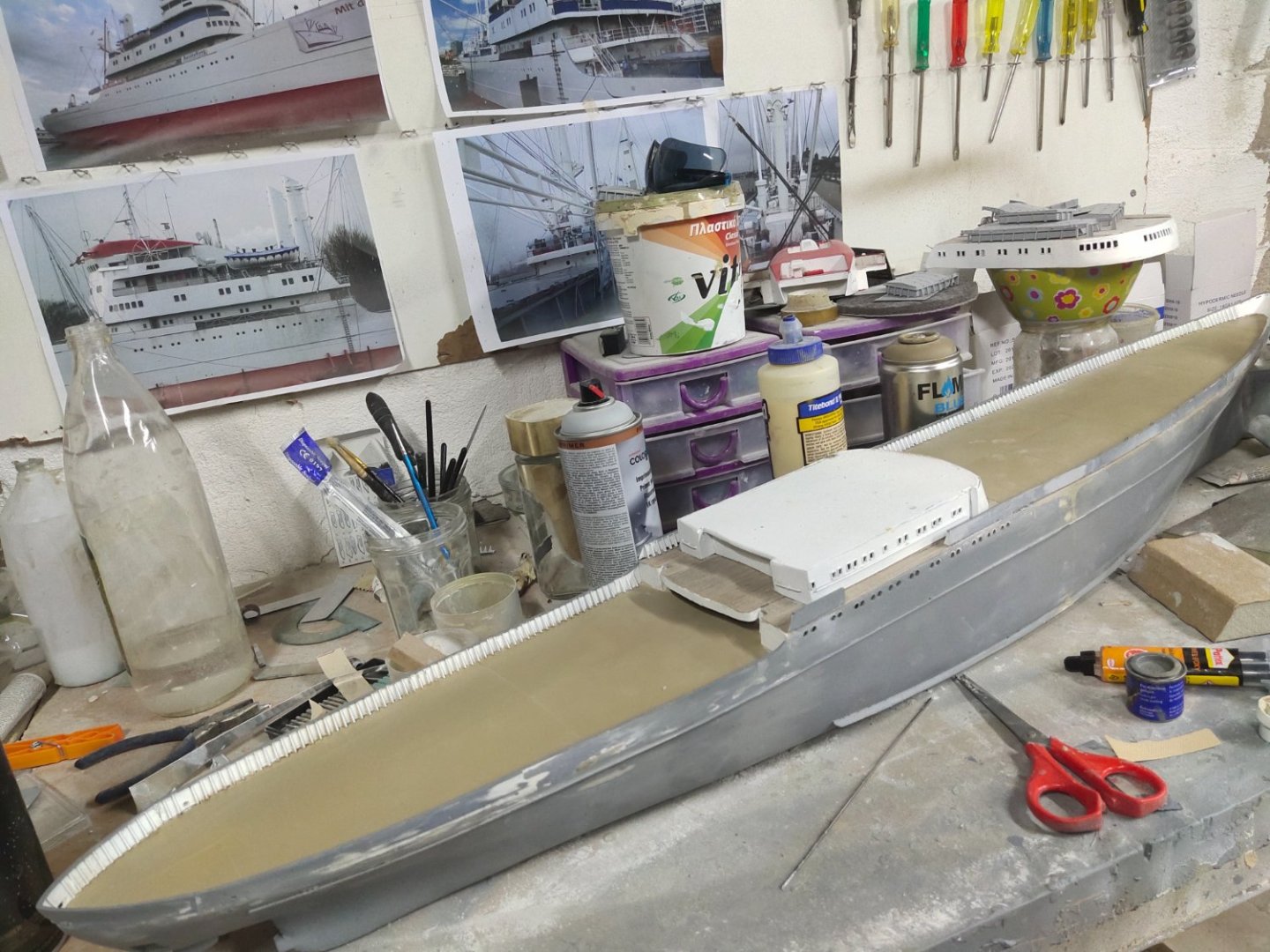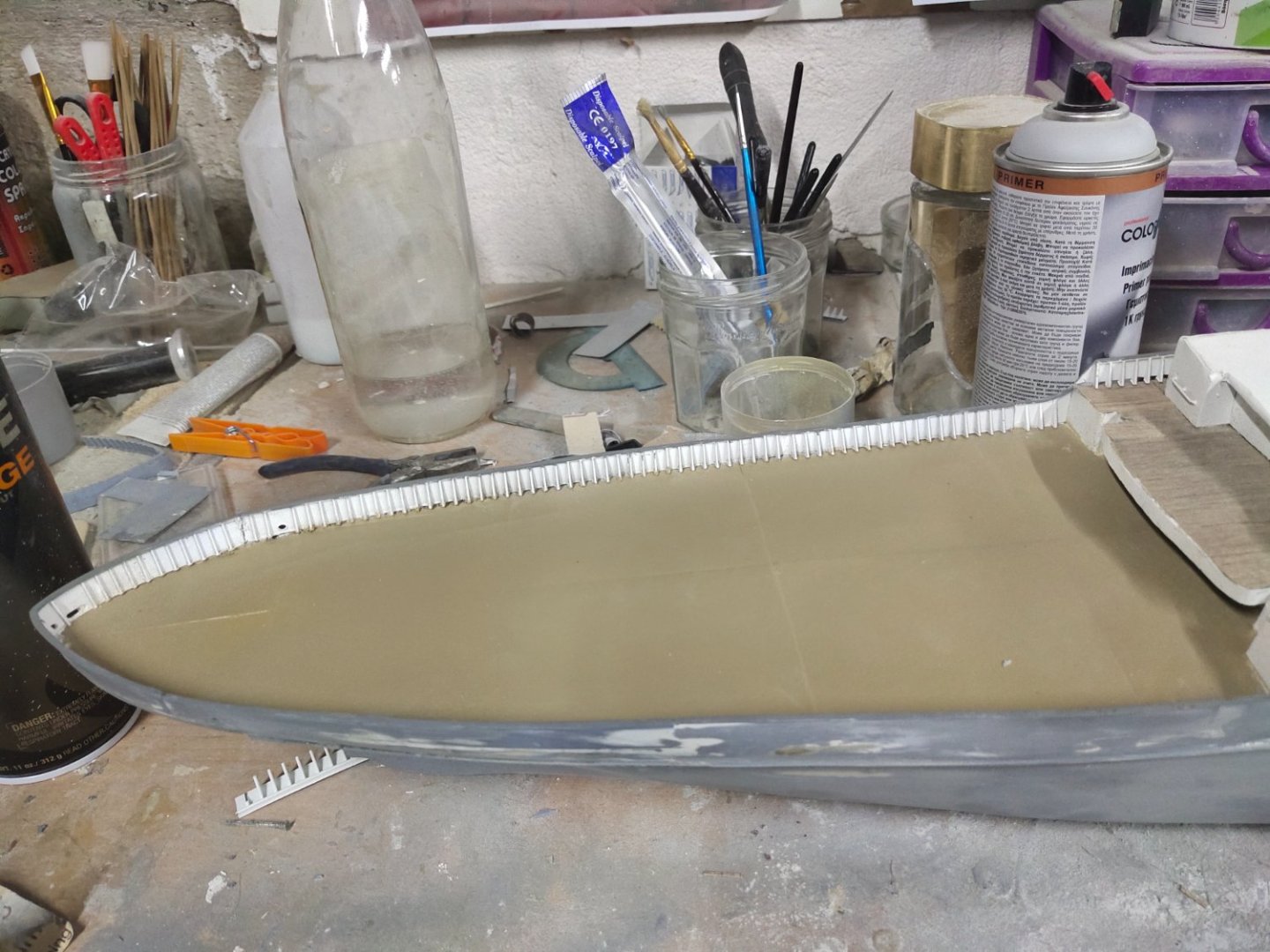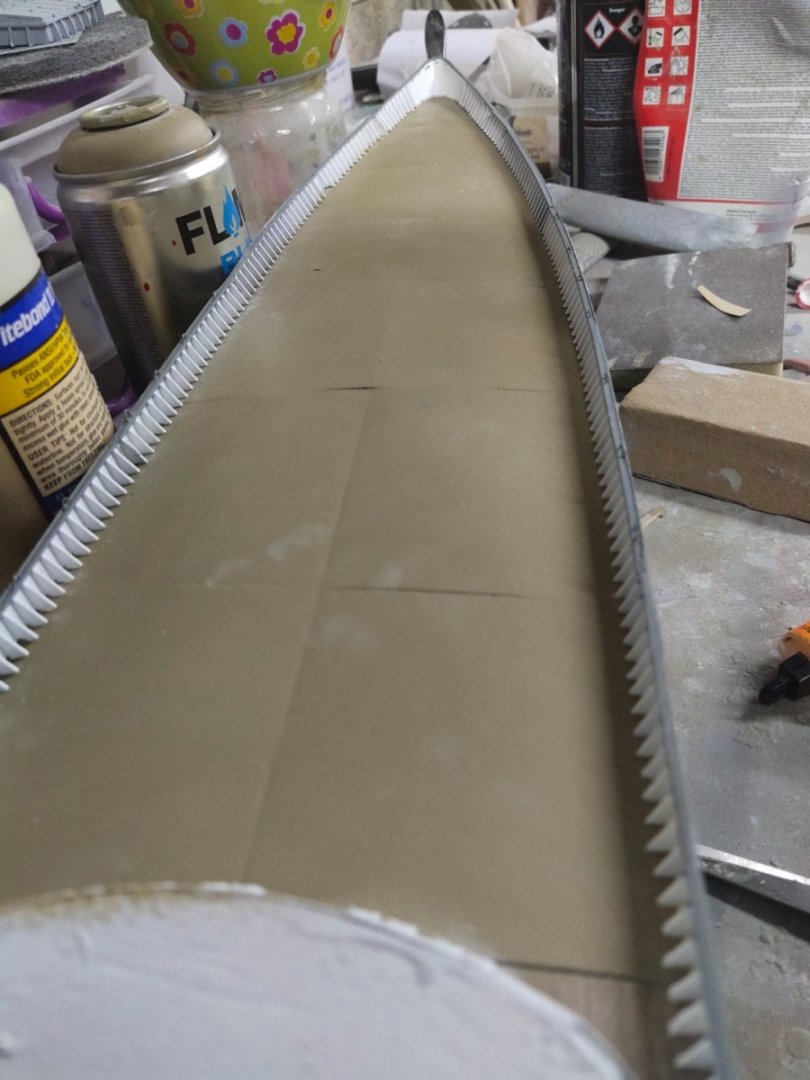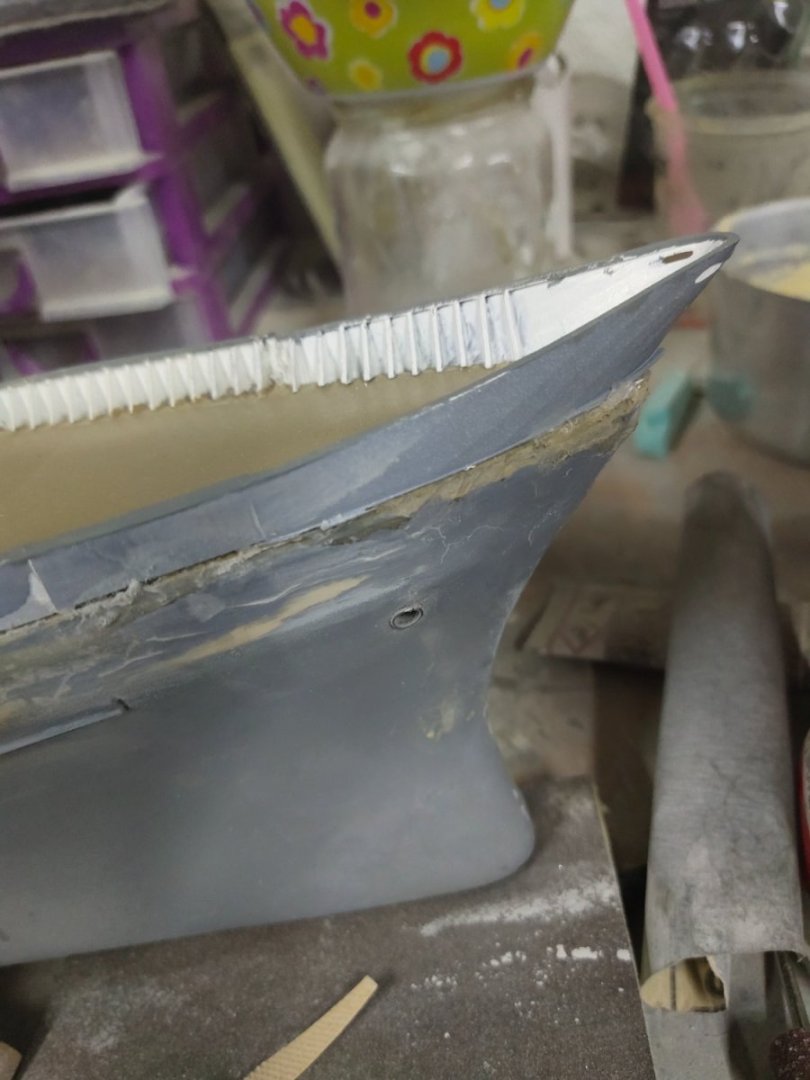
mikegr
Members-
Posts
813 -
Joined
-
Last visited
Content Type
Profiles
Forums
Gallery
Events
Everything posted by mikegr
-
Because I work with resin therefore o use CA this makes a mess on painted decks. This gives me an idea of how special resin kits must be treated. After making some paint corrections with brush I added more details, like bollards, anchor chain and machinery as well as secondary antennas over hangar. What left is 4 ladders and railings. Then I have to deal of how to make the main radar mast as well as the unusual shape of rear type 517 radar
-
Some pics on daylight. I added some gel and microballoons at the middle of the dockyard to create an ice effect. At the edges I poured microballoons over paste to represent snow accumulation. A small amount of white glitters added for extra shine effect. Extra snow added on Akula as well. For the roof top microballoons plus few glitters over paint did the job. I will restart the base, with less snow and more icy surfaces. Typhoon needs to be re worked also. Note on Akula, resin has warped already.
-
Fitting doesn't lie. Hangar proved too long thus space between this and funnel wasn't enough for the SSMs to be fitted. I had to shorten it by whole 5mm. Funnel had to be repositioned as well. Not easy process when deal with CA glue and resin. Plastic deck broke and had to be repaired. Funnel was re printed with added details, hand ladder and grills. Also SSM boxes were reprinted 1mm narrower. The base is a separate piece very delicate, almost transparent. Its shorter, to give a correct lower firing angle. Also secondary AA was given a haircut by one mm. Finally their type 345 radar was fitted as well as the 347G radar for the main gun, at the very top of the superstructure.
-
Progress has paused because I decided to have some education about ice and snow. At large surfaces even in that small scale I find that it takes more that paint job, no matter how perfect will be. I got some extra materials on hand. Ready made snow paste, ice paste and micro balloons. I added some more usual staff like heavy gel, PVA and paint. From left to right -Ice paste -Ice paste with microballoons -snow paste -snow and ice paste -heavy gel and ice paste -heavy gel and snow paste -heavy gel, paint and microballoons sprinkle on top -Heavy gel and microballoons -heavy gel and microballoons sprinkle -paint, PVA and microballoons --paint, PVA and microballoons sprinkle -heavy gel and white glitters. Ice paste gives a good shiny transparency but big colorful glitters reduce realism. This is an artcraft paste not a modeling one. Microballoons proved a fantastic material. White and shiny like crystal because its actually crystal powder. Gives a nice effect when sprinkled on other pastes but even if added alone. Tomorrow I will post more pics on day light.
-
Armament. Type 79 4" Gun. This is the improved second stealth version thus the complex shape. I took a Mk38 5" gun file and modify it. Although proved too complex for my skills it turned close enough to the real thing. Barrels shape was also good and conical Next was the YJ 83 SSM Launch boxes. I made them a bit wider to make sure that every detail would be printed. I was happy to see that the base was printed with good accuracy so no PE parts would be needed Next was the HQ 7 short range SAM. This is replaced by HQ 10 a RAM style weapon. Easy to design and print. Air defence provided also by Type 76 37mm twin gun. Its elliptical shape proved too much for my design skills. After a week of trouble I printed a hemisphere shape and sanded it down with 600 grit sand paper. I replaced barrels with 0.4mm sterile needles and you can see the difference. Finally the 3200 ASW Rockets. Printed in 2 pieces. Plan was to fit 6 individual needles at the holder but holes proved to fragile. Not for my skill. I reprinted in one piece then printed again 15% bigger to have a better detailed quality. Hard to achieve accuracy without some over scale, thats why model companies can't avoid it I guess
-
A not so used bult in this forum. Sounds exciting.
- 9 replies
-
- German
- Battleship
-
(and 1 more)
Tagged with:
-
Thanks for comments and likes Instead of using problematic white I used a spray can to paint the dock. Then I will use shades of gray, gradually to erase the snow. So basically its the opposite technique comparing to submarine painting. Let's see of this works well. Doors on shelters replaced with other type. Light were added. I need to extend the dock because the truck can't turn and the buildings won't fit
-
After experimentation and research i found out that the mini compressor is not working good enough with acrylics. They need to be thinned a lot for a proper flow. That means extra thin white is quite hard to cover dark surfaces. In my next diorama i will be using a new compressor which I hate because of the size and noise. So finally I did it I turned the two quartet hulls into warehouse, bunker, shelter, call it whatever you like it. Space for land construction is reduced in favor of more sea and faster progress. Need to speed up a bit
-
The work on the hull is almost done. The bow looks like Virginia Class nuclear cruisers. Rounded at the upper half, tighter and more straight lower. I was thinking to shape it by sanding. But I am a better butcher than a surgeon. I simply cut the lower part of the hull and replaced with a triangle one. The shaping effort now was tremendously less
-
This is the hull after a few hours of work. A plastic sheet was glued as a main deck. I need to work on details and give the bow the right shape. If I was given this in the age of 10 I would probably be the happiest child and would go straight for bathtub tests. But im a greedy adult and i need mode detailed work, rigging, photo etching and more, to satisfy my self
-
Done painting the dock. Epoxy primer, grey paint, (red brown road), dark weathering, light weathering, black wash. Finally put the cable holding the rubber fenders. I may add some green at the base were dock meets the water. And some light rust streaks at the base of those black things that ships are using to tie the ropes which I can't recall the name and I am too lazy to google it
-
So I decided to print the hull. But the shape is not that simple as in Horizon class or like type 45 Destroyer that I was looking. Spend quite some time without having the desired effect. After printing drawings to 1:1 scale, hull was estimated to 16 cm. Deck plan was glued to the most -close dimension- piece of wood I could find. The smell of sanded wood filled the air replacing the resin odor. I kinda missed that. Let the fun begin.
-
Normally this is a scratch built not a model. However its too small compared to other mega projects here and I like to have it in the same section with my other 1/700 built, with mods permission. Not sure how I came up with this idea. , probably found some detailed drawings while searching online for modern frigates info material, so I convinced my self to give it a try. Modern ships are easy to be built especially as waterline models, cause of the less complicated lines. The Type 053H3 (Jiangwei II) is the first multi role frigate of the PLAN Navy. They displace 2.500 tones at 112 meters long. They are replaced by type 054 frigates.
-
No update for 3 weeks depsite 3 weeks of daily work from half an hour to whole evening. Typhoon was a different story. First I had to fit extra bulges around the tower area like in the real sub Then I tried for a snow effect. But those large areas actually gives the optical illusion of a larger scale so more detailed job should be considered. For my bad luck I didn't want to give an easy flat snow finish, something more challenging caught my attention After few failed attempts I noticed that engraved details, particularly the cover of missile silos have gone. It was time to not only reprint the front hull part but to interfere in the file and make the lines more clean. With the right modification this was successful. Painting failures went on for several evenings. Finding the right thickness on white paint to spray over large black area was a disaster. From, say 30 hours of work, 29,5 was spend on paint testing and airbrush cleaning. I even suffered a break down but thanks to online information airbrush was repaired quick without need of wasting time ordering spare parts online. The missile silo hatch missing is due to a file problem. After a not so good scratch built attempt and new paint failures it was time for a re print. And as usual, further design modifications were necessary. This time were also more extended. New tactics were used, a home made snow paste was used and some chalk powder. After several tests I scored a result that prompts me at least to proceed to the next stage Perhaps the hull leftovers can be modified to shelters or bunkers😁
-
Cap San Diego by mikegr - 1/160
mikegr replied to mikegr's topic in - Build logs for subjects built 1901 - Present Day
Small update I have been working on the bow. I used some epoxy putty to shape the bow. Very easy to shape but hard to sand. Smaller gaps filled with body car filler. Some hull imperfections were covered with glaze putty as well as epoxy in order to make a smooth surface. After bow shaping I will concentrate on eliminating last minor hull bumps and gaps. Nexts pictures won't look much difference but there definitely some work to be done -
Cap San Diego by mikegr - 1/160
mikegr replied to mikegr's topic in - Build logs for subjects built 1901 - Present Day
After slow progress and piece by piece assembly all sections are into place. I painted white the internal part and grey the upper side. Externally putty was applied at joints then sanded but not primed yet. I need to do some work on the bow. The deck at the anchor area is a bit "fat" and it should be trimmed somehow to meet the slim frame. The bow is also quite sharper on the upper end like the real ship and needs to be aligned with the rest of it. Finally there are some design lines that must be deleted so frame will have a smooth finish like the rest pieces.
About us
Modelshipworld - Advancing Ship Modeling through Research
SSL Secured
Your security is important for us so this Website is SSL-Secured
NRG Mailing Address
Nautical Research Guild
237 South Lincoln Street
Westmont IL, 60559-1917
Model Ship World ® and the MSW logo are Registered Trademarks, and belong to the Nautical Research Guild (United States Patent and Trademark Office: No. 6,929,264 & No. 6,929,274, registered Dec. 20, 2022)
Helpful Links
About the NRG
If you enjoy building ship models that are historically accurate as well as beautiful, then The Nautical Research Guild (NRG) is just right for you.
The Guild is a non-profit educational organization whose mission is to “Advance Ship Modeling Through Research”. We provide support to our members in their efforts to raise the quality of their model ships.
The Nautical Research Guild has published our world-renowned quarterly magazine, The Nautical Research Journal, since 1955. The pages of the Journal are full of articles by accomplished ship modelers who show you how they create those exquisite details on their models, and by maritime historians who show you the correct details to build. The Journal is available in both print and digital editions. Go to the NRG web site (www.thenrg.org) to download a complimentary digital copy of the Journal. The NRG also publishes plan sets, books and compilations of back issues of the Journal and the former Ships in Scale and Model Ship Builder magazines.

